PLUS: women smash glass ceiling in the transpirt industry

spring 2024 fors-online.org.uk
WATCH THE CLOCK YOUR GUIDE TO THE DRIVING TIME REGULATIONS MAGAZINE
BUSY YEAR A celebration of FORS’ achievements in 2023
20/20 VISION Better safety ahead as TfL’s Direct Vision Standard is upgraded SAFETY UPDATES New equipment on trucks will prove a life saver





the City Streets: Essential Skills for Confident Urban Driving
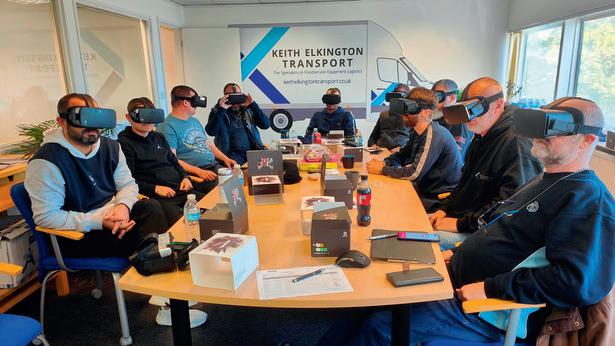
Manager Refresher/OLAT course –
must for compliance
CILT courses ensure you stay updated on regulations and daily operations. Book now through our Training Team at 0345 9001312.
We specialise in assisting companies every step of the way. Explore our Trustpilot reviews and discover why we consistently receive 5-STAR RATINGS.
2 | STANDARD MAGAZINE spring 2024
M
i
i s s i o n s ! T h e c o m p l e t e g u i d e f o r u r b a n d r i v i n g w i t h F O R S P r o f e s s i o n a l : S a f e D r i v i n g , V R S a f e U r b a n D r i v i n g , a n d L o C I T Y D r i v i n g t r a i n i n g . TOTAL COMPLIANCE 2 8 M a r k e t P l a c e , F l o o r 3 , G r a n t h a m L i n c o l n s h i r e N G 3 1 6 L R 0 3 4 5 9 0 0 1 3 1 2 DGSA Advisor Service ALLMI Training Driver CPC Training FORS Immersive VR Training Convey Tachograph External Transport Manager The UK's Leading Nationwide Transport, Logistics and Construction Consultancy and Training Provider i n f o @ t o t a l c o m p l i a n c e . c o . u k Transport
FULLY FUNDED COURSES!! F U L L Y F U N D E D F O R S P r o f e s s i o n a l S a f e D r i v i n g a n d V i r t u a l R e a l i t y C o u r s e s o n o u r w e b s i t e : h t t p s : / / t o t a l c o m p l i a n c e . c o . u k / b o o k - a - c o u r s e / .
Conquer
a s t e r t h e c i t y , m i n i m
s e e m
a
Our
FORS TRAINING ALERT!

spring 2024 STANDARD MAGAZINE | 3 Management Publisher: Matthew Eisenegger Editorial: Editor: Trevor Gehlcken Telephone: 07747 787403. Email: gehlcken@hotmail.com Art Editor: Leo Gehlcken Telephone: 01257 231521 Email: design@cvdriver.com Contributors Steve Banner, Richard Simpson, John Challen Editorial Address Commercial Vehicle Media & Publishing Ltd, 4th Floor 19 Capesthorne Drive, Eaves Green, Chorley, Lancashire. PR7 3QQ Telephone: 01257 231521 Email: matthew@cvdriver.com Advertising Sales: David Johns Telephone: 01388 517906 Mobile: 07590 547343 Email: sales@thestandardmagazine.co.uk Contact FORS: Web: www.fors-online.org.uk Tel: 08448 09 09 44 Email: enquiries@fors-online.org.uk @FORS_online (Twitter and LinkedIn) fors-online.org.uk About us Note The publisher makes every effort to ensure the magazine’s contents are correct. All material published in The Standard Magazine is copyright and unauthorised reproduction is forbidden. The Editors and publisher of this magazine give no warranties, guarantees or assurances and make no representations regarding any goods or services advertised in this edition. The Standard Magazine is published under a licence from Commercial Vehicle Media & Publishing Ltd. All rights in the licensed material belong to Matthew Eisenegger or Commercial Vehicle Media and Publishing Ltd and may not be reproduced whether in whole or in part, without their prior written consent. The Standard Magazine is a registered trademark. If you are not going to keep this magazine for future reference please pass it on or recycle it.
FOR THE INDUSTRY BY THE INDUSTRY

LET’S GET TOGETHER
Here you’ll find the latest and greatest range of vehicles, equipment, green technology and innovation available for a sustainable future in commercial road transport.
VISITOR REGISTRATION FROM JANUARY at cvshow.com
4 | STANDARD MAGAZINE spring 2024
@TheCVShow
thecvshow
cvshow
the-cv-show

HELLO & WELCOME
Welcome to the latest edition of The Standard
The dark gloomy days of winter are now behind us and everyone in the transport industry will be heaving a sigh of relief as the daylight hours increase.
The winter weather proved a real mixed bag this time around. Up in Lancashire, where I reside, we’ve had a good few days of snow and ice, leading to the inevitable problems on the roads. Meanwhile down in Devon, where The Standard editor Trevor Gehlcken lives, there have only been a few nights of frost the whole season, with not a sign of the white stuff, even up on the wilds of Dartmoor.
Needless to say, FORS Operators have been using the extra knowledge they have gained through accreditation to keep their vehicles safe in the bad weather. I travel extensively the length and breadth of Britain as part of my job and I must say I’m glad to see more and more FORS stickers appearing on the back of vehicles as the word gets round about the benefits FORS Operators gain.
For my part, whenever I happen to meet transport chiefs who aren’t signed up to FORS, I always try to advise them that they really are missing a trick. Not only is it incumbent upon all of us to do our bit for road safety and the environment, but I tell them that following the advice given by FORS will also inevitably save money for transport firms in the long run.
After all, one fatal collision could cost a company a fortune in compensation and lost production, never mind the personal side of an incident such as losing a well-loved staff member.
The staff at FORS have certainly been busy during the past year and inside you’ll find details of exactly what improvements they have been making to the scheme, publicised recently in the 2023 annual review.
There’s also a complete rundown of the rather confusing regulations that exist at present regarding drivers’ hours. The waters in this particular pond have been muddied as a result

of Britain leaving the EU, so it’s important that all transport managers are fully up to date with how long their drivers are allowed to operate on the roads.
On the legal front, there’s another feature inside from FORS Associate OdiliaClark about the dangers of drink and drugs in the workplace and how this problem can be largely eradicated with a bit of thought. Drinking and driving has been a well-known scourge in the workplace for years but, rather worryingly, it appears that drugs are now becoming more common too. It’s yet another new problem for transport chiefs to deal with, as if they didn’t have enough on their plates already.
Meanwhile, we turn the spotlight again on Transport for London’s Direct Vision Standard. The introduction of DVS was a bold move and it has proved a real safety game changer as fatal collisions where vision – or lack of it – was a contributing factor have fallen by 75 per cent since the standard was introduced five years ago.
The DVS rules are being tightened further later this year and once again transport operators need to know exactly what they will have to do to remain compliant.
Read on and enjoy this latest issue…

spring 2024 STANDARD MAGAZINE | 5


28-31
Right: Timely reminder
Drivers’ hours regulations can be complicated. Get the lowdown on who is allowed to drive what – and for how long
24-27
Left: Better vision
TfL is cranking up the Direct Vision Standard rules. Are your vehicles ready for them?

12-15
Left: Year of action
FORS looks back on the many ways it has improved its offerings in the past 12 months
16-19
Below: New safety rules
We review the new General Safety Regulations which will be compulsory fitment on all new vehicles from July

6 | STANDARD MAGAZINE spring 2024

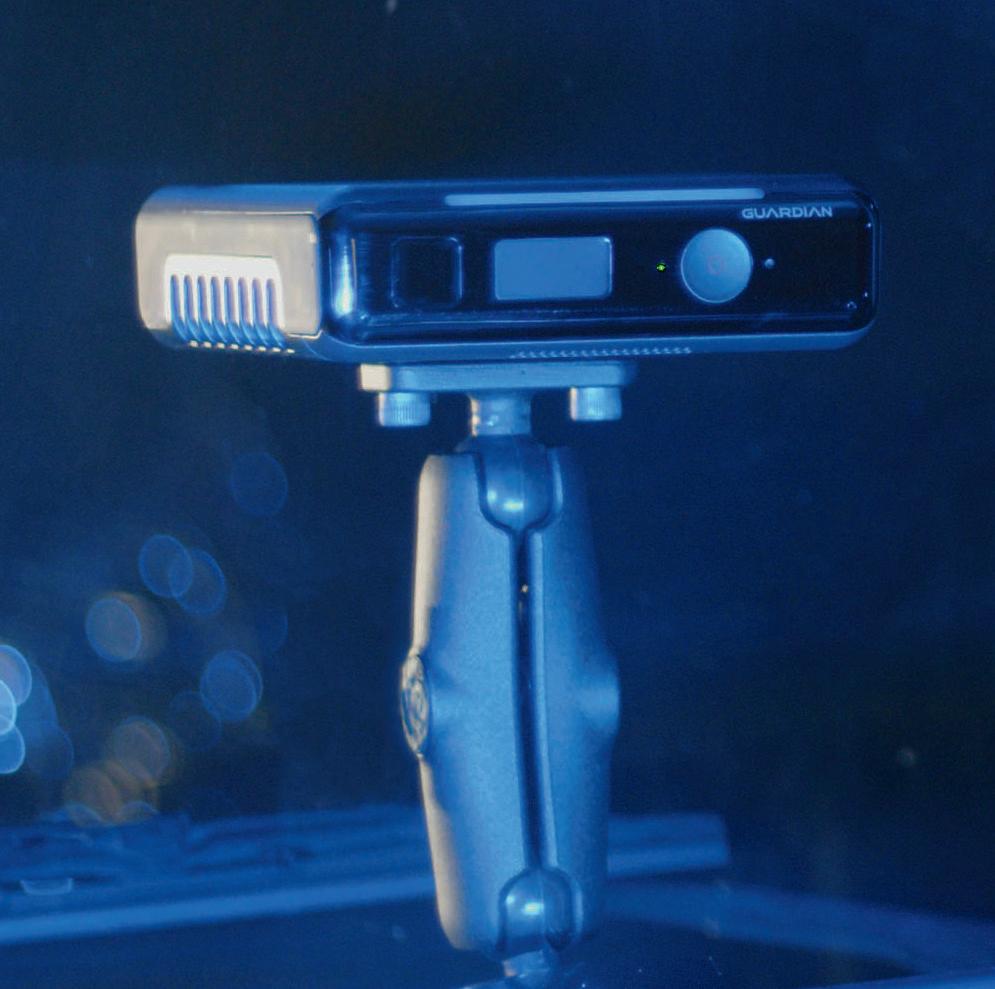
42-43
Above: Lean and green
Volvo’s new FH Aero takes energy efficiency to a higher level
44-45
Left: Sights on safety
How FORS’ ‘Drive Safe’ system is helping in the battle to cut road injuries and deaths
56-57
Right: Importance of ESG
Environmental, Social, and Governance principles can improve companies’ performance

8-10 News
Latest ‘need to know’ information for all FORS Operators
12-15 Successful year
A busy 12 months of upgrades and improvements for FORS
16-19 Even safer
Trucks will have to include more safety systems than ever
20 Transport event
Looking ahead to what’s on at this year’s RTX show
24-27 New vision rules
Transport operators face new Direct Vision Standard regulations
28-31 Time to drive
Wading through the convoluted regulations around drivers’ hours
32-33 Face to face
With FORS Concession Director Geraint Davies
38-41 Invest in women
International Women’s Day message has huge resonance
42-43 Volvo launch
Meet the new green truck that runs on diesel, biofuel or electricity
44-45 Safer driving
Spotlight on FORS Drive Safe system that improves driver behaviour
46
Drink? No drive!
How Dräger is preventing drink driving at work
52 Tyre talk
How to get more miles from each tyre through simple checks
56-57 Legal compliance
Keeping staff drink and drug free at work for better performance
61 Women in transport
How an increase in diversity is improving the trucking world
spring 2024 STANDARD MAGAZINE | 7
MAGAZINE
Better education
FORS merges courses to upgrade its driver training portfolio p8
Blindspot safety
New Brigade device ups the ante for safe driving p8
FORS improves training with new ‘Safe Driving’ course
FORS has revised and updated its driver training output with the introduction of its new ‘Safe Driving’ course. The new offering is fully redesigned and consolidates the scheme’s previous Safe Urban Driving (SUD) and Van Smart courses.
Safe Driving is delivered through the FORS Professional training portfolio and is available
FORS Safe Driving is available now through the FORS Professional licensed training providers
to drivers of all vehicle classes, from vans through to 44-tonne GCW articulated vehicles. A full redesign means participants will receive the very latest tuition on defensive driving to instil a safety mindset which benefits drivers, vulnerable road users and the wider public. Course highlights include drivers’ regulatory responsibilities and the importance of safe driving practices on motorways, rural and urban roads. Importantly, Safe Driving takes a deep dive into key areas that may negatively impact individuals behind
Going for gold
Major construction deals will now require top FORS standard p9
the wheel such as driver fitness, health, distraction and impairment. Safe Driving also includes a practical on-cycle session and a theory module. Both 3.5-hour modules contribute towards Driver Certificate of Professional Competence (CPC), plus mandatory Work-Related Road Risk training as required at FORS Silver.
FORS Concession Director
Geraint Davies said: “Both our previous SUD and Van Smart training courses delivered significant benefits for drivers, albeit for different vehicle classes. Our new Safe Driving course brings all the various course elements together into one redesigned package, which will provide benefits for everyone. Our FORS Professional training portfolio remains the most comprehensive training resource for drivers and managers currently available in the transport sector.”
FORS Safe Driving is available now through the FORS Professional licensed training providers. •
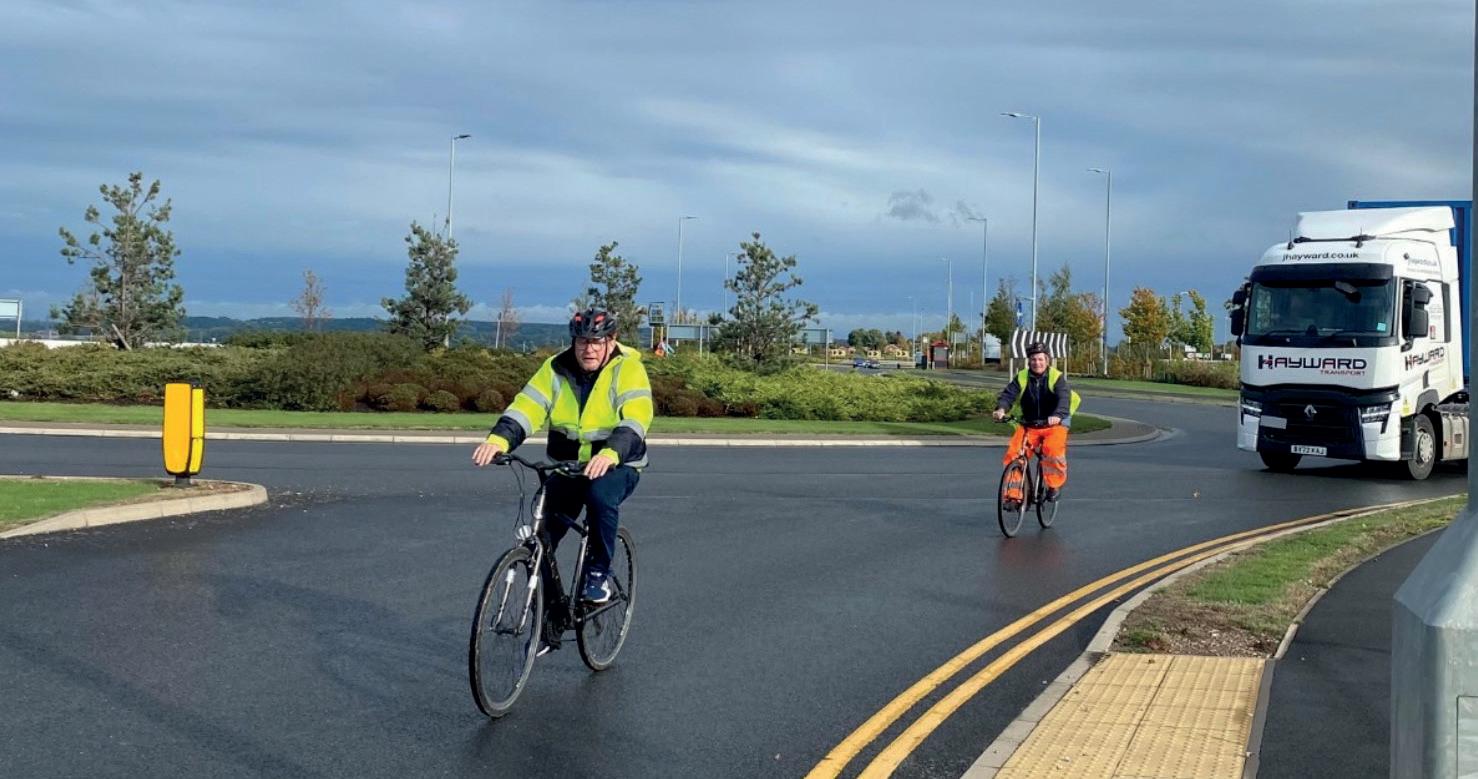
LoCITY upgrade
FORS revamps course to provide extra green advice p9
Lunaz rating
Upcycled electric refuse truck maker gains five safety stars p9
Brigade’s new Radar Predict offers increased blind spot safety
FORS Associate Brigade Electronics has launched Radar Predict – its latest side blind spot information system (BSIS), designed to protect cyclists from incidents with HGVs.
Using artificial intelligence (AI), Radar Predict alerts the driver about potential collisions by analysing data such as the speed and direction of the vehicle and cyclists nearby. The system uses a specially designed algorithm to alert drivers when an impact with a cyclist is likely.
Many of the collisions between cyclists and HGVs occur because the driver has limited ‘direct vision’ from the cab. Radar Predict supports HGV driver visibility via a single dualradar unit that is fitted to
Using artificial intelligence (AI), Radar Predict alerts the driver about potential collisions by analysing data such as the speed and direction of the vehicle and cyclists nearby
the nearside of the vehicle to provide complete side coverage, including the trailer unit.
A trailer discovery mode will detect whether the vehicle is fitted with a trailer and prevents the articulation from causing false alerts. The driver is alerted only if a cyclist enters the detection zone and poses a potential collision risk. The system issues differentiated visual and audible alerts based

on the time to collision, providing an initial notification upon detection and escalating to a more urgent warning if it predicts an imminent collision.
Thierry Bourgeay, senior product manager at Brigade Electronics, said: “Radar Predict has been developed to address the issues caused by blind spots for HGV drivers when manoeuvring in close proximity to cyclists. The system ensures full coverage down the nearside of the vehicle, including the trailer and greatly reduces false alerts for drivers as it will only activate when a collision is likely. Additionally, it will automatically activate when the vehicle is turning, so no indicator selection is required by the driver.”
•
FORS News 8 | STANDARD MAGAZINE spring 2024
Below: The new ‘Safe Driving’ course is available for all drivers of commercial vehicles
Above: New Radar Predict is designed to improve blind spot visibility
Extra help
FORS Operators gain more help from Helpline service p10
Police on board Met officers undergo FORS training for trucking empathy p10
Major London contracts will now require FORS Gold, says TfL

The Greater London Authority Group is showing its commitment to road safety by announcing that all new contracts worth more than £1 million and involving vehicles will require suppliers to be FORS Gold accredited.
FORS revamps LoCITY Driving course with environmental upgrades
A new and improved FORS Professional LoCITY Driving course has been launched. The original seven-hour training course is now in line with current environmental issues and has been redesigned into a more efficient 3.5-hour module. The new course content includes:
• Why there is a need to reduce environmental impact and improve air quality
• Vehicle features and technology to reduce
emissions
• Fuel efficient driving techniques and efficient journey planning
• The latest renewable fuels available for commercial and passenger vehicles
• The new half day course, required for FORS Gold, enables operators and drivers to benefit from the modular Driver CPC approach. The course is now available through the FORS Professional licensed training providers.
•
Volta electric trucks are back on track
Customer trials of Volta electric trucks are underway in the UK again after the company was rescued following its bankruptcy announcement last December.
New owner Luxor Capital has worked with an experienced team to recapitalise Volta Trucks and develop a simplified and capital efficient business plan.
effective in July. Customer trials in live operations have started in UK, with a larger fleet of vehicles available in the second. Joint planning with Steyr Automotive in Austria targets resuming series production later this year.
These changes aim to further enhance the safety standards of fleet services
Fleets will have to have either Gold accreditation from FORS or an alternative Transport for London (TfL) approved scheme.
Freight vehicles remain disproportionately represented in fatal collisions in the capital and TfL says more action is needed to achieve its Vision Zero goal. It believes that moving to the higher standard of FORS Gold accreditation
will ensure accredited operators meet the enhanced standards, which are above the legal requirements for operating commercial vehicles, further reducing the risk to vulnerable road users.
The new requirements will be enforced from April 2024 and will not affect suppliers with existing contracts. Suppliers holding contracts valued under £1m will be required to be accredited to a minimum of FORS Silver.
Their internal supply chains must also be FORS Bronze Accredited.
These changes aim to further enhance the safety standards of fleet services operating in the capital, helping them to reduce road danger for all, including vulnerable road users such as people walking and cycling, said TfL.
•
The new company, Volta Commercial Vehicles Ltd, is registered in the UK and re-launch activities are now underway.
Vehicle development for series production of the 16t and 18t versions of the Volta Zero is ongoing and timed to meet the GSR-2 (General Safety Regulation) standards,
Essa Al-Saleh, CEO of the new company, said: “We’re looking to confirm orders with existing customers, reassemble the supply chain, complete a fundraising round and ensure series vehicles are ready for delivery. Right now, we are in the midst of discussions with our suppliers and partners to enable these objectives. We have learned a lot from our challenging journey and are emerging stronger and more focused than ever.” •

FORS News spring 2024 STANDARD MAGAZINE | 9
Above: Major contracts in London will only be given to firms that are FORS Gold Accredited
New Helpline technology improves customer experience
The FORS Helpline is proving an invaluable benefit for Accredited Operators seeking guidance on any aspect of the scheme. In 2023, the Helpline team handled more than 42,500 interactions from over 2,400 companies, making and receiving a total of 20,081 calls and responding to 22,613 email queries.
Looking for ways to improve customer experience, 2023 saw the launch of a new omnichannel contact centre. The solution provides a brand-new cloud-based contact centre, supporting natural language processing (NLP) and voice recognition.
The new system helps callers to quickly navigate through menu options, which in turn allows the FORS Helpline team to better identify and track calls. Another tool asks callers to explain the object of their query and then matches that response to a set of pre-determined subjects. Helpline staff can then immediately identify the purpose of the call.
FORS Helpline Manager
Christina O’Keeffe said: “The majority of our calls are around topics such as booking an audit, accreditation levels and help with toolkits and training. Having the calls pre-screened not only helps staff to give operators advice
FORS is always looking to evolve and improve customer experience
quickly and easily, but also gives our team a simplified and calmer working environment.
“FORS is always looking to evolve and improve customer experience, so we are in the process of looking at other ways that the Helpline can provide added value and direct operators to the information they need. Thanks to the new cloud-based contact centre, we believe we are already offering a better customer experience .” •
Below: In 2023, the FORS Helpline team handled more than 42,500 interactions

Met police use FORS training to better understand transport firms’ problems

The Metropolitan Police is hoping to foster better relations with truck and van operators by putting officers from the force’s Commercial Vehicle Unit (CVU) through FORS training.
The partnership with FORS comes as the Met Police seeks to boost engagement with commercial vehicle operators of all types, committing to a more educational approach and creating an environment of open dialogue rather than focusing on law and enforcement.
Advice from the FORS Practitioner ‘Managing Abnormal Indivisible Loads’ training module had been incorporated into the CVU’s own Toolbox Talks, while a two-hour presentation to hauliers is said to have been particularly well received. Content from FORS has also been described as enormously beneficial in the CVU’s understanding of operators’ obligations.
The CVU is now looking to integrate more FORS content into its own training material. A total of five Response Sergeants from the Met’s CVU have since committed to
Above: Met police are hoping to foster better relations
truck and van operators
completing the full FORS Practitioner programme, which comprises a series of ten individual modules covering all aspects of fleet management. One Sergeant is also committed to undertaking the 15-module FORS Advanced Practitioner programme.
He said: “Our responsibility for roadside enforcement is crucial but we’re becoming increasingly focused on education and engagement with hauliers. Transport Managers’ roles are so much more than mere
The partnership with FORS comes as the Met Police seeks to boost engagement with commercial vehicle operators
compliance and FORS has really helped us appreciate the many and varied aspects of running a successful fleet operation. I think we’re all buying into the FORS best practice mindset.
He added: “We want to build better relations with all commercial vehicle operators •
FORS News 10 | STANDARD MAGAZINE spring 2024
with
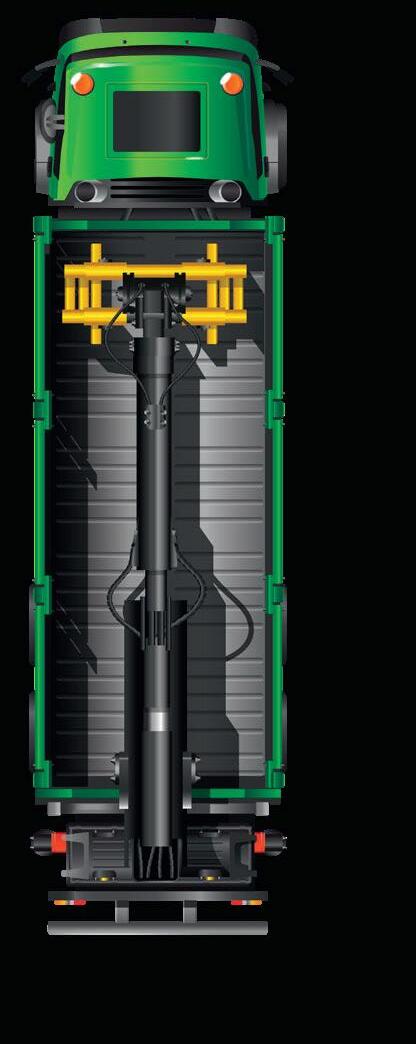






DIRECT VISION STANDARD (DVS) 2024 COMPLIANCE IS YOUR FLEET READY FOR 28 OCTOBER 2024? Contact our team of experts for a quote for equipment and installation. Scan the QR code for more information. Motormax offers products meeting UNECE 151 & 159 regulations guaranteeing 100% compliance for fleet operators. Progressive Safe System kits include Moving Off Information System (MOIS), Blind Spot Information System (BSIS), Camera Monitor System, audio warnings and warning signage. 0121 353 3663 info@motormax.co.uk motormax.co.uk 2.2M FR OM VEHI CL E SI DE 9M FR OM CA B FR ON T 2M HEIG HT 0.5M 0.5M TR UC K WIDT H 2M
Words: Matthew Eisenegger
2023: A YEAR OF SUCCESS AS FORS GOES FROM STRENGTH TO STRENGTH
New initiatives and improvements increase the benefits for FORS Operators
As a new year unfolds, FORS can look back on 2023 as a time of increasing success as transport operators recognise the benefits that FORS brings. As the various FORS Operators study and learn, they invariably adopt new methods which in turn create safer, more environmentally-friendly ways of working.
Here we look back on the successful work that the FORS team has undertaken in the past 12 months.
New projects
FORS Concession Director Geraint Davies said: “In 2023, we made headway on several transformational projects. Early in the year we launched a more flexible way to achieve FORS Practitioner alongside offering five new Practitioner courses, followed by the introduction of a new certification: Advanced Practitioner.
“We had an overwhelming response to the new offering, launched in July 2023 and I’m pleased to say we ended the year with 82 Advanced Practitioners.
“We also continue to improve the stability and usability of the website, with a new look and feel for FORS online being launched later in the year.
“Alongside the improvements to the scheme, the team worked hard to deliver
an excellent service to operators and uphold the FORS Standard. We ended the year having completed a staggering 4,617 Bronze audits and 2,821 Silver/Gold audits.
“Not only that, but you told us the audit service we’re delivering is excellent, as 894 operators rated our service 9.4/10 via our Post-audit Satisfaction Survey (which we also reintroduced in 2023).
“You told us the FORS Helpline Team has supported you through accreditation too.
“We held our annual FORS conference in November, going back to our roots of hosting the event in Birmingham. A theme throughout the conference, and throughout the year in fact, was the importance of FORS collaborating with industry stakeholders.
“In 2023, we strengthened our relationships with CLOCS, Driving for Better Business and Project EDWARD, enabling us to come together in our missions to make the roads safer for all. We held a workshop with key industry players (eg DVSA, Logistics UK and RHA) to look at our Future of Accreditation project, which you can read more about on page 5.
“Plus, we started working with six new partners that are offering exclusive benefits and services to our operators.”
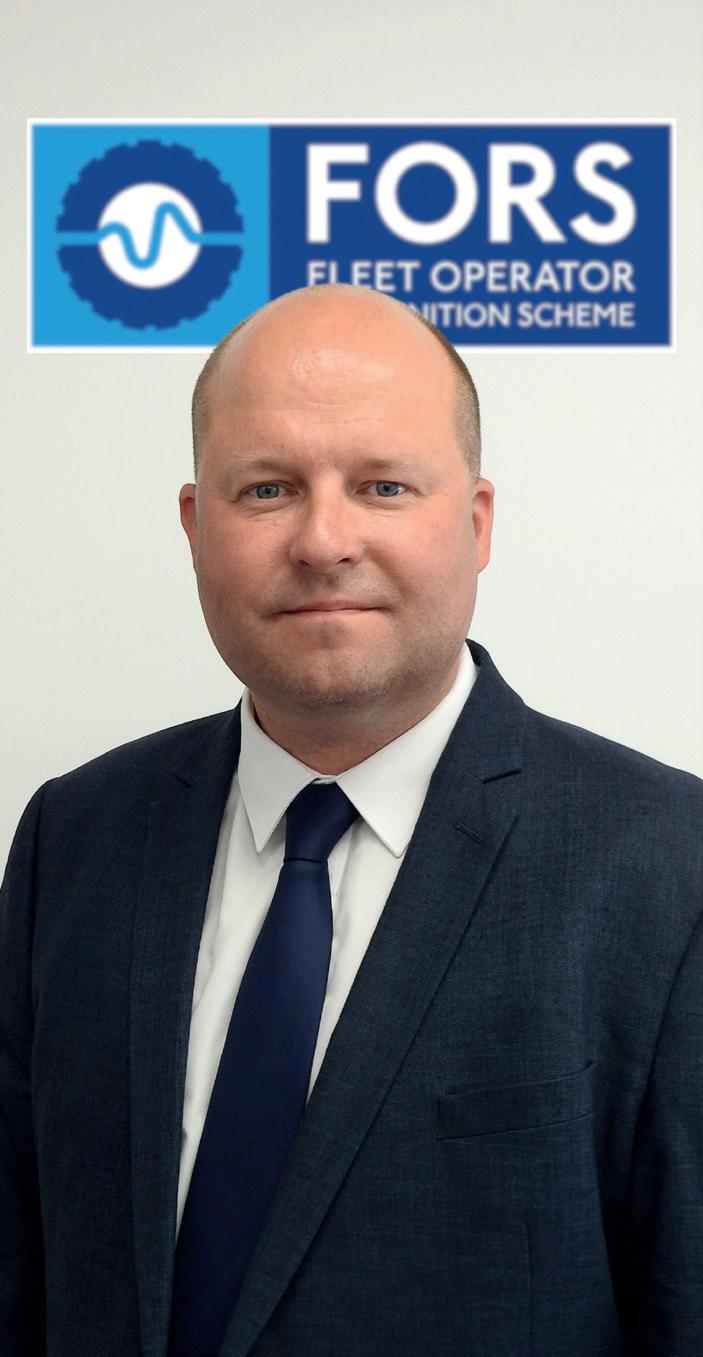
Above: Geraint Davies: looking back at a busy time for the FORS as it improves the services for transport operators
Review of 2023 12 | STANDARD MAGAZINE spring 2024
Upholding the standard
Quality checking audits, providing expert advice to operators and training auditors were just a few of the tasks completed by the FORS Quality & Assurance (Q&A) Team. In 2023, the team continued to maintain the highest standards of quality assurance and uphold the FORS Standard, while expanding their remit and offering more assistance to operators.
The number of Bronze audits conducted was 4,617, with a first-time pass rate of 84 per cent. The first-time pass rate for Enhanced Audits was 56 per cent, with 16 Enhanced Audits completed in the year.
There were 14 Accredited IAFA companies and 286 audit QAs, four auditor QAs and 14 system checks on those companies were completed. Quality assurance checks were completed on 2,214 audits/applications.
To improve its auditing service, relationships with FORS Audit Providers were strengthened. Monthly meetings were introduced to evaluate performance and quarterly Audit Provider on-site meetings were held to ensure everyone was informed about recent and upcoming changes.
One new Audit Provider in 2023, Logistics UK, was welcomed, with the team providing training, guidance and support throughout the process. Communication with FORS Auditors was bolstered too, with the Q&A Team delivering six training sessions for 63 new auditors, introducing a quarterly newsletter and hosting Auditor drop-in
sessions. Alongside this, unannounced random audit spot checks were introduced in September.
A priority for the Q&A Team for 2023 was to be seen as engaging and
and Records, Managing Abnormal Indivisible Loads, Introduction to Fleet Auditing and Road Traffic Collision Investigation.
• Following operator feedback, the way
One new Audit Provider in 2023, Logistics UK, was welcomed, with the team providing training, guidance and support throughout the process
approachable to operators. It was recognised that some may feel nervous about having an audit, so it was important to show operators that FORS was there to support them. Workshops and webinars were introduced to make the team actively available to operators.
To help support operators further, an Operational Performance Action Plan template was developed by the Q&A Team. The template supports Silver applicants in satisfying Silver requirement S2 Performance Data.
Refresh for FORS Professional Providing professional development options to fleet managers and drivers is a key part of the FORS service. Enhancing the FORS Professional offering was a big focus in 2023, with many exciting advancements taking place:
• Five extra FORS Practitioner modules were launched: Managing Driver Fatigue Risk, Managing Drivers’ Hours
FORS Practitioner works was changed. Instead of the requirement to complete ten mandatory modules, managers can now take six mandatory courses and are able to choose the remaining four from a selection of nine optional modules.
• ‘FORS Advanced Practitioner’ was introduced, giving those managers who want to go above and beyond the opportunity to demonstrate their skillset and commitment to the role. At the end of 2023, there were 82 FORS Advanced Practitioners.
• The Safe Urban Driving and Van Smart courses were revamped and merged into one Work-Related Road Risk driver training course: Safe Driving.
• LoCITY Driving was redesigned and prepared for a 2024 launch.
Below: The five new Practitio ner modules included Managing Driver Fatigue Risk and Managing Drivers’ Hours

Review of 2023 spring 2024 STANDARD MAGAZINE | 13
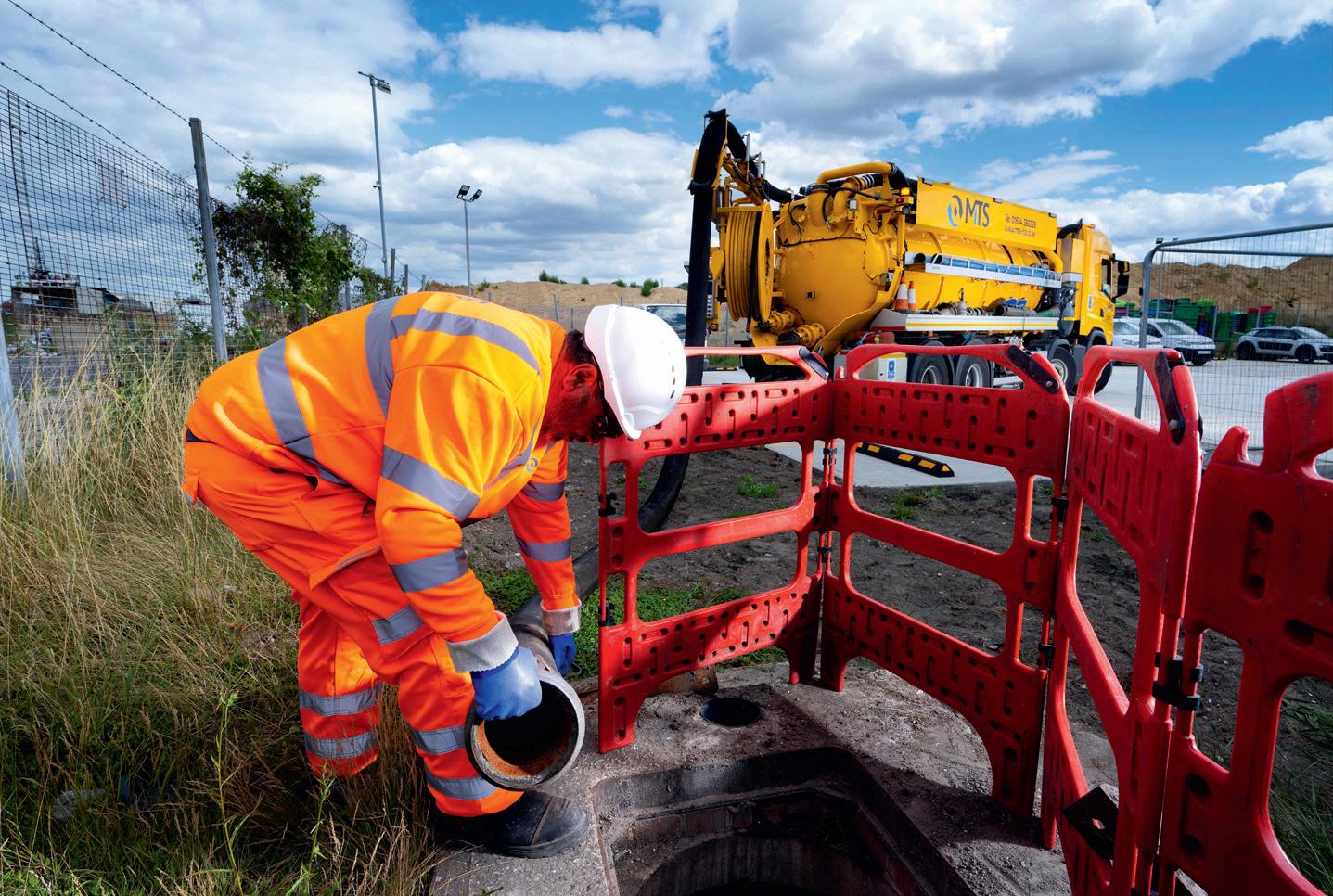
Informing and engaging the fleet community
The Marketing & Communications Team wanted to build on the success of 2022, improving the perception of FORS and increasing operator engagement through targeted, relevant communications. The team also supported the business in growing the scheme through engaging and benefits-led marketing.
Notable achievements include launching a new guide that informs and educates operators on hot topics in the industry.
The team also created case studies with several operators to promote the benefits
of FORS and inspire other operators to join the scheme. One highlight was creating a video with the team at FORS Gold operator MTS Cleansing Services, who explained how the training provided by FORS had helped to change driver behaviour and its accreditation had helped the firm to win more work.
Providing a holistic solution
During 2023, a number of new partners were established and current offers were reviewed to ensure FORS was providing operators with real value. Partner offerings help operators to be safer, smarter and greener and highlights of these partnerships in 2023 included:
• Launching an exclusive FORS insurance offering that recognises the adoption by operators of best practice. It provides

opportunities for operators to save costs, receive additional benefits and enjoy an improved claims experience.
• Introducing a range of new Affinity Partner offerings: Penalty Charge
• Notice Management Service, provided by Logistics UK
• Fuel Analytics, provided by Portland Fuels
• Vehicle Safety Solutions, provided by Fleet Sense/Durite
• Vehicle Inspection Service, provided by Lloyd Morgan
• Electronic Proof of Delivery ePod, provided by Podfather
• Driver Fatigue and Distraction AI Solution and Support Service, provided by Seeing Machines.
Third-party training offerings were established that help operators train and develop their employees. These offerings give operators access to discounted
Achievements include launching a new guide that informs and educates operators on hot topics
in the industry
pricing, saving money and time that would be spent sourcing quality training providers.
Unique employee benefit offerings were launched, such as retail discounts, gym membership and personal tyre offers.
Biggest annual conference yet
Back in Birmingham and with the promise it would be the biggest event yet, the FORS Annual Conference returned for its sixth chapter on 2 November.
It had been 16 months since the last event, due to operator feedback that an event in the autumn season is preferable. The location returned to its Birmingham roots, being hosted at the ICC Birmingham, with the Midlands being
Review of 2023 14 | STANDARD MAGAZINE spring 2024
Left: A video with MTS Cleansing Services explained how gaining FORS Gold Accreditation had benefited the firm
Below: FORS launched a vehicle inspection service, provided by Lloyd Morgan
best placed to serve operators based in the North and South alike.
The venue was also the perfect place to host the 400+ transport professionals, thanks to its spacious layout and modern fittings – not to mention the blue décor in the auditorium, synonymous with the famous FORS blue.
When deciding the theme ‘Building a resilient FORS Community for the road ahead’, the FORS Team aimed to curate a line-up of talks that not only gave practical advice to operators on how they could overcome the many challenges facing the industry but also instil a community spirit within delegates.
The creation of new networks, as well as familiar faces bumping into one another, could be witnessed across the exhibition hall throughout the conference breaks. As in previous years, there was a well-supported exhibition featuring a wide range of FORS supporters. Headline sponsor Drivetech had a stand within the expo area and was represented on the programme by UK Commercial Consultant, Anthony Marcou.
Helpline
The FORS Helpline was busy in 2023 assisting operators with their queries or reaching out to operators to check if

they needed further assistance. In the 2023 Accredited Operator Survey, 85 per cent of respondents that have used the helpline rated it positively.
The outbound calls conducted by the team are focused on moments in the accreditation process where operators may require more assistance, eg. an operator coming up to their expiry date or one that has not booked their Bronze audit yet. The feedback has
been excellent.
The Helpline Team has also assisted in producing useful resources. For example, the FORS Welcome Pack was launched in the middle of the year and now has over 300 downloads from recent joiners to the scheme. ◼
Above and below: the FORS Annual Conference in November was the biggest and best yet

Review of 2023 spring 2024 STANDARD MAGAZINE | 15
Words: Richard Simpson
NEW SAFETY SYSTEMS, MORE LIVES SAVED
Equipment that will be a compulsory fitment on all new trucks from July could save more than 25,000 lives by 2028, but Brexit means some British-built trailers could slip through the net

New Technologies 16 | STANDARD MAGAZINE spring 2024
Below: Much of the equipment covered by General Safety Regulations is intended to protect vulnerable road users

Trucks will become more intelligent and more active when it comes to safety, with more features that intervene rather than just inform
Eight new systems will become compulsory and a further three will follow in phased introductions in 2026 and 2029 under the second phase of the EU’s General Safety Regulations.
The 2024 systems have been compulsory on new truck types launched from 2022, so many of them are already standard or optional equipment on new vehicles today.
The introductions are:
• Emergency stop signal: Pulsing brake lamps or similar that indicate to following traffic that the vehicle is decelerating hard
• Reversing information: Technology such as camera or sensors to give the driver an overview of objects and people behind the truck
• Tyre pressure monitoring system: A system that monitors tyre pressures and reports tyre pressure loss in real time to the driver (TPMS)
• Intelligent speed assistance: A system that actively monitors speed and alerts the driver if they breaking the speed
limit, to encourage them to slow down
• Blind spot information system: A system that warns the driver of vulnerable road users riding adjacent to the truck or crossing in front of it
• Moving off information system: A system that warns the driver of vulnerable road users in front of the vehicle before driving off or when driving slowly
• Alcohol interlock installation facilitation: A standardised interface for alcohol interlocks (breathalysers) in vehicles. The actual breath testers that prevent the driver from moving off until a ‘clean’ test has been recorded will not be a compulsory fitment
• Drowsiness and attention detection: Safety systems to assess the driver alertness and warn the driver to take a break when needed.
The year 2026 will see distraction recognition and prevention systems made compulsory. These will be capable of recognising the level of attention a driver is paying to a situation and warn the driver to be more alert if necessary.

New Technologies spring 2024 STANDARD MAGAZINE | 17
Below: Improvements to direct vision from truck cabs will become compulsory later. This Scania already features a low-datum cab and kerb-view window in the passenger door

Later improvements
Three years later, two new systems will be introduced: improved direct vision and an event data recorder. The first of these will be familiar to operators already working with London’s Direct Vision Standard, while the second will gather data relevant to collision investigations in a similar manner to the ‘black boxes’ used in aviation. The direct vision standards will be phased in from next year, allowing manufacturers to modify cab designs.
These systems should not be seen as autonomy by the back door, according to Anna Wrige Berling, traffic and product safety director at Volvo Trucks. She said: “We can expect to see more active safety technology that supports truck drivers in the future, as well as safer road infrastructures in cities.
“Looking further ahead, trucks will become more intelligent and more active when it comes to safety, with more features that intervene rather than just inform. However, there will still be a clear need to balance this with a well trained driver. While active safety systems that support the driver and reduce the consequences of human error are essential, the driver is still the most

important safety system in the truck.”
Outside the EU, other nations including the UK, and Norway, Switzerland, Turkey and Israel will follow suit and with vehicle lead-in times being what they are, the first eight GSR systems will already be compulsory fitments on new trucks ordered today.
Brexit muddies the waters
For powered vehicles sold in the UK, the EU GSR regs will read right across. If nothing else, it would probably cost truck manufacturers more to produce UKspecific trucks without the systems than it would to fit them across all production vehicles.
But the waters are muddier when it comes to trailers. Mass-produced trailers from the large continental manufacturers will no doubt have all relevant systems fitted as standard, but the situation is more complex for trailers produced in the United Kingdom.
A spokesperson for one of the UK’s trailer manufacturers said: “Since Brexit, the UK has been playing catch-up with Type Approval.
“The mass-produced trailers built on the continent go through the European Whole Vehicle Type Approval process,

New Technologies 18 | STANDARD MAGAZINE spring 2024
Above: Anna Wrige Berling, Traffic And Product Safety Director at Volvo Trucks
Above: A moving off information system protects vulnerable users in the blind spot to the front of the truck
Below: Blind-spot information system warns the driver of vulnerable road users adjacent to the truck or crossing in front of it.
Installing a camera or sensors on the back of a trailer is relatively simple: getting that signal into a tractor unit’s cab is rather less so
just as powered trucks do.
“But in the UK, even the trailers we build in comparatively large numbers, many standard designs such as curtainsiders will go through the UK’s National Small Series Type Approval (NSSTA). Specialist trailers, and those only built in small numbers, each go through Individual Vehicle Type Approval (IVA). Even before Brexit, a large proportion of UK trailer production went through one or the other of these two processes.
State of flux
“The situation is in a state of flux. There is a GB Whole Vehicle Type Approval process being implemented, but it is not finalised or enforced yet. Many features such as TPMS are not yet mandated within the NSSTA and IVA type approval process for trailers.”
The Standard understands that the UK’s Vehicle Certification Authority is facing capacity constraints and these are delaying the introduction of revised standards.
“It gets even more complicated when Northern Ireland comes into play,” the spokesperson continued. “Here, following the European regulations to the letter will be compulsory. The process is still UK Type Approval, but it has to adhere to the EU Regulations that are current at the time. So the GSR, insofar as they apply to trailers, will be in force there.”
The result is that there will be three different standards for trailers, any one of which may apply given individual circumstances. Type Approval code e11

will apply to trailers registered in the EU (including the Irish Republic), g11 to trailers registered in England, Scotland and Wales and n11 to trailers registered in Northern Ireland, which will actually meet exactly the same standard as an e11 trailer registered in the EU.
Meanwhile, where does this leave the operators ordering new trailers? Should they demand that their trailers are equipped to the highest standard, or is the penalty in terms of cost and complication too great?
The extra cost of equipping trailers to meet the new regulations is not particularly onerous: industry insiders put it at hundreds, rather than thousands, of pounds per unit.
However, the manufacturers are still facing knock-on issues in the supply of components and these are likely to get worse rather than better in the near and medium term given the recurrent difficulties facing shipping through the Suez Canal.
“I suspect that a lot more proprietary individual systems for functions such as tyre pressure monitors, are being used than you might expect,” the spokesperson suggests.
“Installing a camera or sensors on the back of a trailer is relatively simple: getting that signal into a tractor unit’s cab is rather less so. At the very least you will probably need a new suzie line linking the two to take the signal. As with many other of these systems, on artics they will only work to their full effect if tractor and trailer are suitable, and compatibly equipped. ◼

New Technologies spring 2024 STANDARD MAGAZINE | 19
Below: Many of the systems encompassed by the latest regulations are well-established in the market.
Right: In addition to the lives saved, operators should benefit from a reduction in the number of more minor incidents
ROAD TRANSPORT EXPO IS BACK THIS SUMMER AT NAEC STONELEIGH
It’s the one-stop shop for everyone in the transport business
Registration is now open for this summer’s Road Transport Expo 2024 (RTX) – the tradeshow extravaganza with a dedicated ‘all about the truck’ focus.
Taking place at NAEC Stoneleigh in Warwickshire from 4-6 June, this free-to-attend event is ideal for anyone involved with the running of an HGV fleet or associated business.
It provides the opportunity to meet more than 200 suppliers, FORS and major truck-makers, in one venue.
Visitors can check out the latest trailers, tyres, tippers, tankers, safety equipment, training providers, insurance experts, compliance firms, workshop kit manufacturers and much more. They can also chat to newcomers and startups in the road transport sector in the Innovation Zone. There will also be a chance to take a test drive in the latest trucks on the market. From Euro-6 diesel models through to battery-electric and biogas, there will be a wide range from the leading manufacturers to explore. Visitors will also be able to attend informative sessions at the show’s Knowledge Zone, covering key topics such as vehicle compliance, technology innovation and fleet decarbonisation. RTX is also a great networking opportunity to catch up with industry peers or meet those all-important new business contacts. There are plenty of informal catering options and meeting areas dotted around the site, including the brand-new ‘Inn on the Green’ and a farm shop selling locally produced food. The FORS stand is 5G78 ◼
◼ Those wishing to attend this event should log on to: www.road-transport-2024.reg.buzz

The opportunity to meet more than 200 suppliers, FORS and major truck-makers, in one venue


Event News 20 | STANDARD MAGAZINE spring 2024
The one-stop industry event that’s all about the truck and everything related to it.
JOIN US
AT THIS SUMMER’S UNMISSABLE TRADESHOW
The only UK tradeshow to feature the BIG SEVEN truck OEMs

Meet 100s of exhibitors representing the entire industry

Three days of informative seminars
Test drive the latest trucks on the market REGISTER



FORS Annual Conference spring 2024 STANDARD MAGAZINE | 21 IN ASSOCIATION WITH
FOR YOUR FREE TICKETS @RTXPO_ Road Transport Expo Road Transport Expo roadtransportexpo.co.uk 4 - 6 JUNE 2024 NAEC STONELEIGH 2024
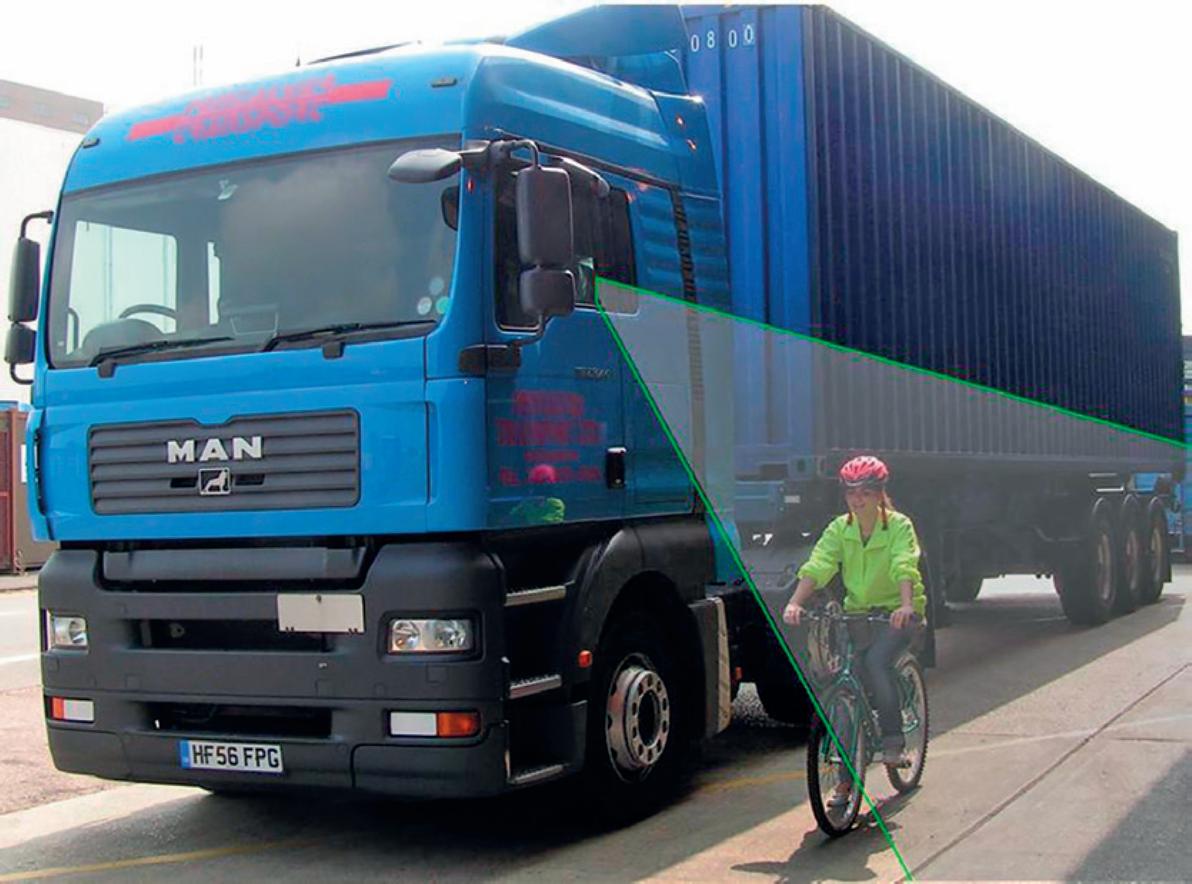





FORS Annual Conference 22 | STANDARD MAGAZINE spring 2024











Classified spring 2024 STANDARD MAGAZINE | 23 Check the driving licences of your entire fleet remotely all for just £1.60 per check To find out more visit checkedsafe.com Find us on Simple to use platform Entirely remote service Pay-as-you-go solution Innovative OCR technology PTC.indd 1 27/02/2024 10:31 UK's leading compliance specialists of it FORS or managing DVSA compliance. we have developed ols to transport Management Driving Training Driver CPC Training Applications Training Management (Bronze/Silver/Gold) Support Refresher Course PTC}> Transport Consultants I Training I Products PTC.indd 1 27/02/2024 10:31 We are one of the UK’s leading transport compliance specialists with over 20 years of experience. Either be it FORS Accreditation or managing DVSA compliance. we have developed comprehensive tools to transform your > DVSA Compliance Management > JAUPT Approved Driver CPC Training > Operator Licence Applications PTC.indd 1 27/02/2024 10:31 We will bridge the gap Special Offer ID:A00609 We are one of the UK's leading transport compliance specialists with over 20 years of experience. Either be it FORS Accreditation or managing DVSA compliance. we have developed comprehensive tools to transform your transport operations. Our services > DVSA Compliance Management > FORS Safe Urban Driving Training > JAUPT Approved Driver CPC Training > Operator Licence Applications > SQA Approved ADR Training > Remote Tacho Management > FORS (Bronze/Silver/Gold) > DVSA Public Inquiry Support > OLAT / TM Refresher Course ptctransport.co.uk 07448 121121 PTC}> Transport Consultants I Training I Products PTC.indd 1 27/02/2024 10:31
Words: Steve Banner
DVS – WHAT’S COMING UP IN THE NEXT YEAR
The Direct Vision Standard has already helped to massively cut deaths on the roads of the capital. Now Transport for London is about to crank up the safety rules even further

Safety 24 | STANDARD MAGAZINE spring 2024
It’s vital that all vehicles using London’s roads have safety at the forefront of their design
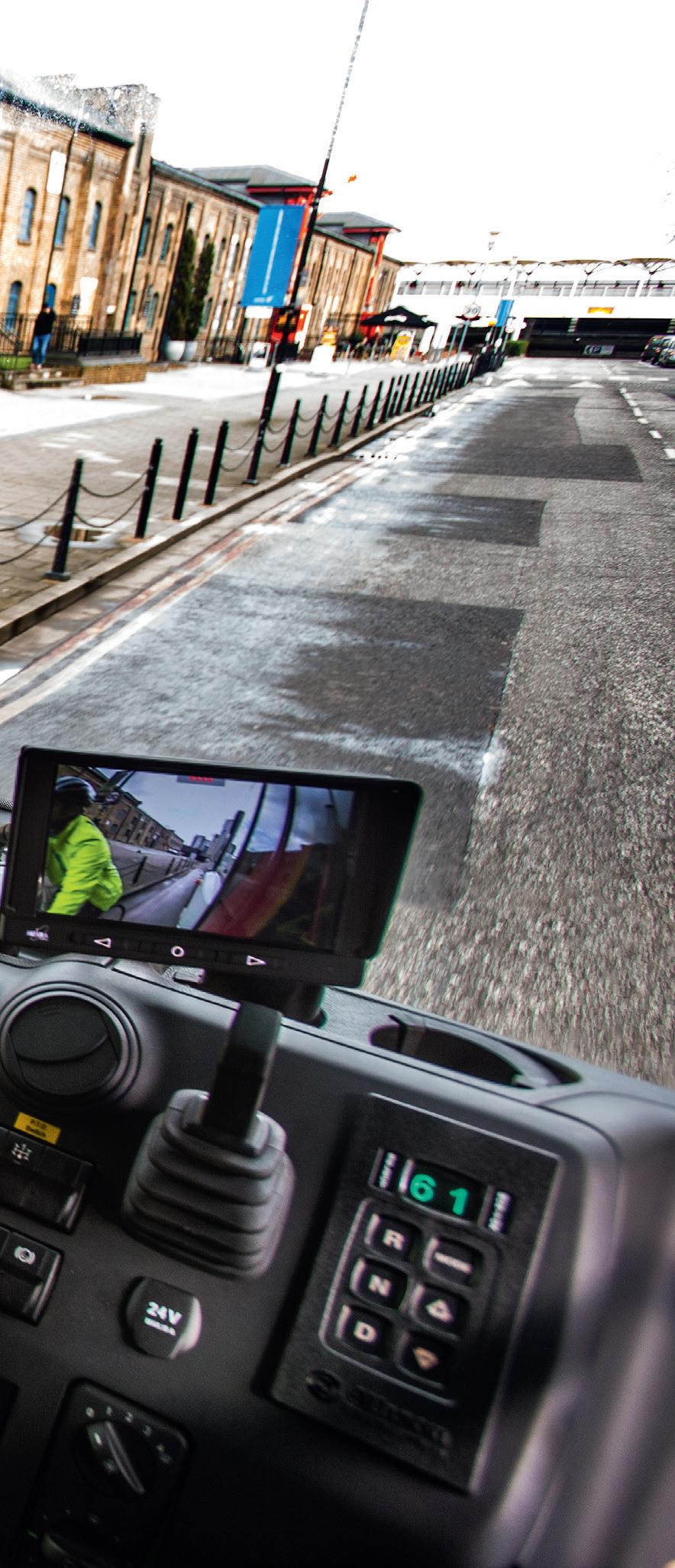
Transport for London (TfL) reports that its world-leading Direct Vision Standard (DVS) is proving to be a life-saver – but even more needs to be done, it says.
Fatal collisions where vision – or lack of it – was a contributing factor have fallen by 75 per cent since the standard was introduced five years ago. But London’s Walking and Cycling Commissioner, Will Norman said: “Every death and serious injury is one too many and it is clear that further safety measures are required.”
TfL Director of Transport Strategy and Policy, Christina Calderato, adds: “We are determined to make the roads safer for everyone and are committed to Vision Zero, London Mayor Sadiq Khan’s goal to eliminate death and serious injury from the transport network. It’s vital that all vehicles using London’s roads have safety at the forefront of their design and our world-first DVS has helped to improve lorry safety significantly.”
The next chapter in the DVS story will open on 28 October with the arrival of the DVS Progressive Safe System (PSS). It will cover trucks grossing at above 12 tonnes with a Zero-, One-, or Two-Star rating operating throughout the capital. Vehicles rated at from Three to Five Stars will not be affected.
The star rating is based on how much a driver can see directly through the cab’s windows of the area around the truck where collisions are most likely to take place.
Operators with vehicles that fall into the Zero- to Two-Star category will be
obliged to fit a package of additional safety devices and apply for a new permit through the TfL website. Applications can be made from June onwards.
While expressing their commitment to improving the safety of all road users, the transport industry’s leading trade associations have voiced concern about this development. They contend that the equipment required may not be available in sufficient quantities by the autumn and claim there is a shortage of technicians qualified to carry out the necessary installation work.
Grace period
In response, TfL has offered the industry a grace period of at least three months from 28 October to give operators sufficient time to bring their vehicles up to the required standard. It will monitor their preparedness and the grace period will be reviewed in June by TfL in conjunction with the London Councils’ Transport and Environment Committee and the transport sector.
TfL has already sent out a survey to help it assess whether a grace period extension will be needed.
What the October change in effect means is that the minimum star rating needed for compliance will be Three Stars.
New technology needed
Compliance with DVS PSS requires the nearside of the vehicle to be fully covered by modern Blind Spot Information System sensors. They should be designed solely to detect vulnerable road users at risk given their trajectory and the trajectory of the vehicle, and not capable of being triggered by street furniture. If the truck is an articulated rig
Safety spring 2024 STANDARD MAGAZINE | 25
Left: London Mayor Sadiq Khan’s goal is to eliminate death and serious injury from the transport network

rather than a rigid, then sensors should be fitted to the tractor unit and are recommended for the trailer where possible. The nearside should also be covered by a camera monitoring system.
truck can present.
All the foregoing items must meet the appropriate UNECE (United Nations Economic Commission for Europe) regulations, where stipulated by TfL.
This bold action is a major step forward in the mayor’s Vision Zero plan to eradicate all deaths and injuries from our roads
Class V and VI mirrors should be mounted on the front and nearside of the vehicle, although camera monitoring or a combination of cameras and mirrors will be viewed as being acceptable. A MOIS –Moving-Off Information System – must be installed which uses sensors to warn the driver of the presence of a pedestrian walking directly in front of the truck while it is stationary.
An audible warning device is required to herald when the truck is turning left, under-run protection must be provided on the nearside and offside unless demonstrably impractical and stickers and markings should be in place to warn everybody in the vicinity of the hazards a
Exacting standards
Some of the DVS PSS obligations are more exacting than those imposed by the European Union’s General Safety Regulations. GSR compliance has been mandatory for all new trucks seeking EU Type Approval since July 2022.
TfL’s MOIS requirement, for example, covers an area that goes all the way up to the front of the truck. GSR permits a 0.8-metre gap.
The work TfL has undertaken with vehicle manufacturers has, however, seen the EU incorporate direct vision into its safety standards. The European Commission expects that this, along with
Safety 26 | STANDARD MAGAZINE spring 2024
Above: Side under-run guard is part of Progressive Safe System

other safety measures being introduced, will save an estimated 25,000 lives by 2038, TfL says.
An operator’s DVS PSS application has to be accompanied by two photographs of the vehicle, one showing the front and nearside, the other the rear and nearside, to show the necessary kit has been fitted. A statement from the fitter or the manufacturer of the equipment which says that the blind spot and moving-off information systems installed function properly and have been fitted in line with TfL requirements must be provided too.
Will Norman said: “More Londoners are walking and cycling than ever before. This bold action is a major step forward in the mayor’s Vision Zero plan to eradicate all deaths and injuries from our roads and will hopefully transform road safety in the coming years.” ◼

FORS Associate Brigade provides a Sidescan Predict sensor
Safety spring 2024 STANDARD MAGAZINE | 27
The Mercedes-Benz Econic enjoys a Five Star rating from TfL
Words: Richard Simpson
CLOCK-WATCHING: A TIMELY REMINDER OVER DRIVERS’ HOURS
A guide to the sometimes confusing state of regulations
It’s now plain that Britain will not be reforming or clarifying vocational drivers’ hours regulations in the foreseeable future. So, we are left with three different sets of rules: GB Domestic, EU, and the Working Time Directive. Most British truck drivers are still governed by EU rules, as they were before Brexit. GB Domestic rules apply to some very specific vocational tasks and both also have to conform to the Working Time Directive.
Domestic incidentals
The main areas covered by GB Domestic rules for truck drivers (over 3.5-tonnes GVW: Gross Vehicle Weight) are the collection of non-trade waste from clients’ premises and the collection of milk from farms and its return as animal feed, although there are other exceptions, including highways maintenance tasks such as snow clearance and salt spreading. These exceptions are tightly defined. For example: the transport of waste between a sorting station and a recycling plant, or the transfer of liquid milk from a dairy to a creamery, must be carried out under EU rules.
For employed drivers working GB
Domestic rules, all the time for which they are paid is defined as ‘duty time’. Duty time must not exceed 11 hours on any working day when a vehicle is driven.
As far as actual driving time is concerned, there is a 10-hour daily limit, which applies to driving on public roads. But there are exceptions: off-road driving is counted as duty time rather

than driving time when conducted for agricultural, quarrying, forestry, building or civil engineering purposes.
Drivers of vehicles under 3.5-tonnes GVW are exempt from the daily duty limit if the driver using the vehicle is working as a doctor, dentist, nurse, midwife or vet, if the vehicle is being used for inspection, cleaning or maintenance work, being used by a commercial traveller when carrying only goods for use as sales samples, working for the AA, RAC or RSAC, or for cinematography or broadcasting.
Drivers do not need to follow GB
Domestic rules when dealing with an emergency (threat to life or major disruption), using the vehicle for private purposes, driving on private land during duty time or driving a vehicle used by police or fire services, or the armed forces.
Hours must be recorded by the driver, either using a tachograph or a weekly record sheet.
EU Hours rules
The majority of truck drivers are regulated by EU Hours rules. Limited exemptions include delivery or collection of a hire vehicle, a vehicle driven to or from annual test or a place of repair, transferring a vehicle between depots, delivering/ collection a demonstrator or new vehicle and taking a vehicle to be scrapped.
EU Hours rules also do not apply to specialist medical units such as mobile scanners, breakdown vehicles operating within 100 km radius of base, vehicles undergoing technical development or road test, vehicles under 7.5 tonnes, or historic (over 25 years old) vehicles used for the non-commercial carriage of goods, vehicles under 7.5 tonnes carrying equipment for the driver’s use in the course of his work (a scaffold truck or builder’s
Drivers’ hours 28 | STANDARD MAGAZINE spring 2024

wagon, for example), or craft goods.
There are further national exemptions for trucks on journeys entirely within the UK. These include: vehicles owned by, or hired without a driver, or by public authorities that do not compete with private transport enterprises. Eligible public authorities include NHS bodies, HM Coastguard, rail networks, and local authorities.
There are also exceptions for agricultural, horticultural, forestry and fishery businesses operating on their own account within a 100km radius of base. Vehicles used for licence/Driver CPC instruction/testing and not for the carriage of goods, and vehicles used to maintain sewerage, or flood protection, utility and road maintenance, and domestic waste collection may also be exempt EU Hours laws. These exemptions apply only to the maintenance of existing facilities and not to the construction of new ones.
In scope
Any driving under EU rules in any given day brings the driver into the scope of EU rules for the whole day, meaning that all the detail regulations governing daily driving time, breaks and rests and weekly rests and driving limits must be complied with. In these circumstances, any commercial driving of vehicles outside of the scope of EU rules, a van for instance, has to be recorded as other work under EU rules. All activities must be recorded by tachograph. Entry facilities on a digital tachograph enable all these activities to be recorded onto the driver’s
card, but failing this, manual notes must be made on the back of an analogue tachograph chart or a printout from a digital tachograph.
Do your duty
Duty time encompasses all work activities, including driving, vehicle checks, loading/unloading and other work regardless of type. This includes self-employed activities and community service. It also includes all Periods of Availability (see the Working Time Directive section) unless the driver is able to use them to take a break or rest that complies with EU rules.
Drivers taking Driver CPC training at the request or instigation of their employer must count this as duty time. However, a driver who chooses to arrange his Driver CPC training for a rest period does not have to record it as duty so long as it is not being undertaken at the request of an employer.
Drive time
After driving for no more than four-anda-half hours, a driver must immediately take a 45-minute break, or start a rest period. The break must not be interrupted (by, for example, checking or moving the vehicle). Breaks can be taken in moving vehicles if they are double-manned. As an alternative, a break of at least 15 minutes can be taken followed by a break of at least 30 minutes in one four-and-a-half hour driving period.
Once a break or breaks of at least 45
Left: All activities must be recorded by tachograph
minutes has been taken, the ‘slate is wiped clean’ and another four-and-a-half hour driving period starts.
Take a rest
Drivers must be free to dispose of their time during a rest. Time spent in another employment cannot count as a rest and a driver cannot be obliged to do anything for his employer, for instance take a call from the office, during this time.
Drivers must take a daily rest period within each period of 24 hours after the end of the previous daily or weekly rest period. A driver must take at least 11 continuous hours of rest (called a regular daily rest period). However, this daily rest requirement can be reduced to nine continuous hours to three times between weekly rest periods (called a reduced daily rest period).
Alternatively, drivers can split a regular daily rest period into two periods. The first period must be at least three hours of uninterrupted rest and can be taken at any time during the day. The second must be at least nine hours of uninterrupted rest, giving a total minimum rest of 12 hours.
Drivers may reduce their daily rest periods to no fewer than nine continuous hours, but this can be done no more than three times between any two weekly rest periods. No compensation for the reduction is required. A daily rest that is less than 11 hours but at least nine hours long is a reduced daily rest period.
Bunking up
Daily rest periods may be taken in a vehicle if it has suitable sleeping facilities such as a bunk for each driver and the vehicle is stationary. If a vehicle has no suitable sleeping facilities, then other arrangements should be made, for example, a hotel, hostel, guest or boarding house, chalet, static caravan or rental accommodation.
Week-ending
A driver must take a weekly rest period after, at most, six 24-hour periods from the end of their last weekly rest, during which they may freely dispose of their time. It may be either a ‘regular’ weekly
Drivers’ hours spring 2024 STANDARD MAGAZINE | 29

fixed week. No more than 90 hours can be driven in any two consecutive weeks.
organised so that he is able to return to base or home before the start of the regular weekly rest period.
Where the arrangement is for the driver to return to their home for this rest period, he may choose to spend it elsewhere such as a friend’s home, or holiday accommodation.
Get a room
Only reduced weekly rest periods may be taken in a vehicle abroad that must have suitable sleeping facilities for each driver and be stationary. If a vehicle has no suitable sleeping facilities then other arrangements should be made, for example, a hotel, hostel, guest or boarding house, chalet, static caravan or rental accommodation.
rest period of at least 45 hours or a ‘reduced’ weekly rest period of between 24 and 45 hours. Only reduced weekly rests can be taken in the vehicle on national journeys.
In any two consecutive ‘fixed’ weeks a driver must take at least two regular weekly rests, or one regular weekly rest and one reduced weekly rest. Other weekly rest periods of either type may be taken in any two consecutive ‘fixed weeks’ in addition to this minimum requirement.
Compensation claim
Reduced weekly rests must be compensated for by taking an additional and equivalent period of rest before the end of the third week following the week with the ‘lost’ rest. This must be added to another rest period of at least nine hours.
Working week
A driver’s working week starts at the end of one weekly rest and ends at the start of another. These may not coincide with the ‘fixed’ week, so a weekly rest can end up being taken in the middle of a ‘fixed’ week. Where a weekly rest falls across two weeks, it may count for one or the other, but not both.
However, no more than 56 hours can be spent driving in any fixed week, and there can be no more than six driving duties in a
Going abroad
Drivers on international work under EU rules may take two consecutive reduced weekly rest periods provided that, in any four consecutive fixed weeks, at least four weekly rest periods are taken, of which at least two are regular weekly rest periods and the driver takes two consecutive reduced weekly rest periods outside the UK and the driver’s country of residence
The driver can interrupt these reduced EU weekly rest periods with a ferry or train journey as long as the whole of the rest period is taken outside the employer’s country of establishment and the driver’s country of residence.
When two consecutive reduced EU weekly rest periods are taken, the compensation for both reductions must precede and be attached to the next weekly rest period, which must be a regular weekly rest period.
Coming home
Operators must organise work so that, within each period of four consecutive weeks, drivers working under EU rules can return to the operating centre where the driver is normally based, or to the driver’s home, in order to spend one regular weekly rest period or a weekly rest period of more than 45 hours including compensation for a reduced weekly rest period. The driver’s work must be
It is not permitted to take regular weekly rest periods and any weekly rest of more than 45 hours which include compensation for previous reduced weekly rest in a vehicle. Such rest periods must be taken in suitable accommodation with adequate sleeping and sanitary facilities such as a hotel, hostel, guest or boarding house, chalet, static caravan or rental accommodation. Cost for accommodation outside the vehicle must be met by the employer. Operators must keep documents at their premises to show how this is complied with for all applicable drivers.
Emergencies and delays
The EU law makes provision for driving activity that would otherwise break the rules during ‘emergencies’ but doesn’t define what an ‘emergency’ is. British law considers emergencies to include danger to the life or health of people or animals, serious interruption of essential public services (gas, water, electricity or drainage), of electronic communication and postal services, or in the use of roads, railways, ports or airports, and serious damage to property.
Vehicles used in an emergency or rescue operation are exempt from the EU rules for the duration of the emergency. However, drivers who have interrupted a rest period to attend an emergency are required to commence/ complete a qualifying rest period before recommencing work.
In order to deal with exceptional circumstances that have caused unavoidable delays during the course
Drivers’ hours 30 | STANDARD MAGAZINE spring 2024
Above: Once a break or breaks of at least 45 minutes has been taken, the ‘slate can wiped clean’
of a journey, a driver may depart from the EU rules to reach a suitable stopping place to ensure the safety of persons, of the vehicle or its load or to reach his operational base or home in exceptional circumstances. Road safety must not be jeopardised.
A 1995 judgment by the European Court of Justice said this provision can only apply in cases where it unexpectedly becomes impossible to comply with the rules on drivers’ hours during the course of a journey. Planned breaches of the rules are not allowed. When an unforeseen event occurs, it is for the driver to decide whether it is necessary to depart from the rules.
Examples of unforeseen events include delays caused by severe weather, road traffic accidents, mechanical breakdowns, interruptions of ferry services and any event that causes or is likely to cause danger to the life or health of people or animals.
Drivers must note all the reasons for deviating from the rules on the back of their tachograph chart or on a printout or temporary sheet if using a digital tachograph on reaching the suitable stopping place at the latest. Disrupted work must be rescheduled and rest breaks taken to get back in compliance.
In unforeseen circumstances drivers can also deviate from daily and weekly driving limits by one or two hours respectively to reach the driver’s home or the vehicle’s base. But the fortnightly limit of 90 driving hours may not be exceeded. Any period of extended driving must be compensated for by adding it to a block of rest by the end of the third week after the incident.
Working Time Regulations
The Working Time Regulations are separate and additional to the EU rules, but are to be followed by those working under them.
They also impact, to a lesser extent, on drivers following the Domestic rules. Domestic rules drivers must not exceed an average of 48 hours of weekly working time over the ‘reference period’ (normally a rolling 17 weeks). They are entitled to 5.6 weeks paid annual leave and to have ‘adequate rest’. Night workers (between midnight and 4 am) are also entitled to medical checks.
Additionally, drivers under EU rules must not exceed 10 hours of working time in every 24 hours if they are night

workers unless there is a workplace agreement to the contrary.
Breaks must be taken so no more than six consecutive hours are worked, and breaks must be of at least 15 minutes. If total working time exceeds nine hours, then breaks must total at least 45 minutes.
Employers are responsible for keeping records regarding Working Time Regulations.
There are limits
The maximum driving time before starting a rest is nine hours, but this can be increased to 10 hours twice in a fixed week.
Driving time is defined as the total time spent driving between the end of one rest and the start of another. All time spent driving, including when the vehicle is off public roads, must be included. Where there is no driving on public roads between
Drivers do not need to follow Domestic rules when dealing with an emergency
two rest periods, then the off-road driving must be counted as other work.
The maximum weekly driving limit is 56 hours from 0:00 on Monday to 24:00 the following Sunday. ◼
This article is a general guide and introduction to drivers’ hours legislation in the UK. It is not a definitive statement of ‘the law’, which in any case is subject to variation from case law and interpretation by courts. Professional assistance from a qualified practitioner should be considered when scheduling drivers and vehicles, and legal advice and representation should be obtained where necessary
Below: In order to deal with exceptional circumstances, a driver may depart from the EU rules to reach a suitable stopping place

Drivers’ hours spring 2024 STANDARD MAGAZINE | 31
Words: Matthew Eisenegger
MEET THE FORS MAN WITH A MISSION
The Standard catches up with FORS Concession Director Geraint Davies to find out how 2023 played out for FORS and, importantly, what Accredited Operators can expect to see in 2024

Anyone spending a short time with Geraint Davies will be left in no doubt that he possesses an infectious enthusiasm for the road transport industry. He knows the vehicles and he knows how to run a successful transport business. But he also understands how difficult it can be in challenging economic times for a business to make money and, in some instances, even survive.
We chat about how things are going since he joined FORS over eight months ago and how 2023 shaped up for him. Davies told me: “In the second half of 2023, we found a growth in operators seeing the renewed relevance of FORS, winning hearts and minds and liaising with the regulators, the Traffic Commissioners and the trade associations, who I have strong links with.
Under Davies’ guidance, FORS has recently been building bridges to reach out to trade associations and industry bodies. He told us: “The adversarial relationships of the past are gone. We work well with the RHA and, for example, Logistics UK is now a FORS Auditor. We have meetings planned with the CPT in the coming weeks too.
“As an example of the new collaboration, I chaired the Wales Transport Advisory Group at the end of last year. Key stakeholders and top speakers were Victoria Davies, Wales Traffic Commissioner; Andrew Rustage, DVSA Manager for Wales; the Police CVU, the Fire Service, Logistics UK, RHA and the CPT from Wales all delivering their speeches from a FORS slide deck, which was heartening to see.
“We had Richard Turfitt, Senior Traffic Commissioner, speaking at the
FORS Conference last year, so it’s all about building and nurturing those relationships. Going forward, a key part of my leadership is collaborating with the industry. We’re launching a new event this year, FORS Forum, which will bring together industry professionals, operators, specifiers, audit providers and more. Returning towards the end of the year is our annual conference, taking place in October. We hope to build on this success and further strengthen our ties with industry bodies.”
Preferred option
There are a number of accreditation schemes open to transport operators, so why should FORS be the preferred option?
Davies said: “FORS is the most established scheme, FORS has substance and depth to it and is the most overarching scheme. Operators do have a choice and I think it’s healthy in business to have competition. FORS is broad and covers many aspects the clients ask for, particularly from a sustainability point of view. Also, in relationship to pricing, FORS is very simple and transparent.”
Regarding the old perception that FORS is London-centric, Davies pointed out: “Some 78 per cent of FORS Operators are based outside the M25, with an everincreasing number in Wales, the north of England and Scotland.
“We are working a lot in the van sector at the moment. The statistics in that sector in terms of killed or seriously injured are far too high. When we speak to our partners at Driving for Better Business, they have highlighted that the van sector requires the greatest emphasis to raise standards. We are also aware that in many cases these can be single vehicle fleets and the cost of entry needs to reflect this, so we will be introducing a great package that is priced accordingly.”
Industry Interview 32 | STANDARD MAGAZINE spring 2024
Geraint Davies – a true expert with a passion for the transport industry
The bus and coach industry is also on the agenda for FORS in 2024. Although the scheme has always been available in the sector, Davies is keen to make further inroads. He said: “We have been engaging with the CPT. We are aware that there are certain schemes out there, but I personally think a lot of which is in the FORS Standard is instantly transferable into that sector. I have a PSV licence and I’ve got a Transport Manager International CPC Bus and Coach and I have driven coaches throughout the UK, so I think to raise standards, particularly in contracted services for schools, is a good thing.”
Big year ahead
This is going to be big year for FORS, with many enhancements coming online. Davies revealed: “As well as the new website,we will be improving the FORS platform, its stability and resilience. That is key to even further enhancing the success of FORS.
“We have been doing a considerable amount of work on training the helpdesk and we are already seeing the positive results of that in improving the operators’ experience.
“We have also worked hard to rebuild confidence through our Future of Accreditation programme (FoA) and we will continue this to retain Accredited Operators and foster growth across new

FORS is the most established scheme, has substance and depth to it and is the most overarching scheme
markets. We’ve also listened to operators and our FoA project looks at simplifying accreditation.
“A key milestone in the FoA project is the redesign of the Bronze audit question set and grading criteria to ensure that it adequately audits regulatory requirements. The most significant change is the move away from a spreadsheet audit to an online platform audit, which will be launched this year.
“It will provide real-time insight, reporting and management of the FORS core service. Every year, we gather
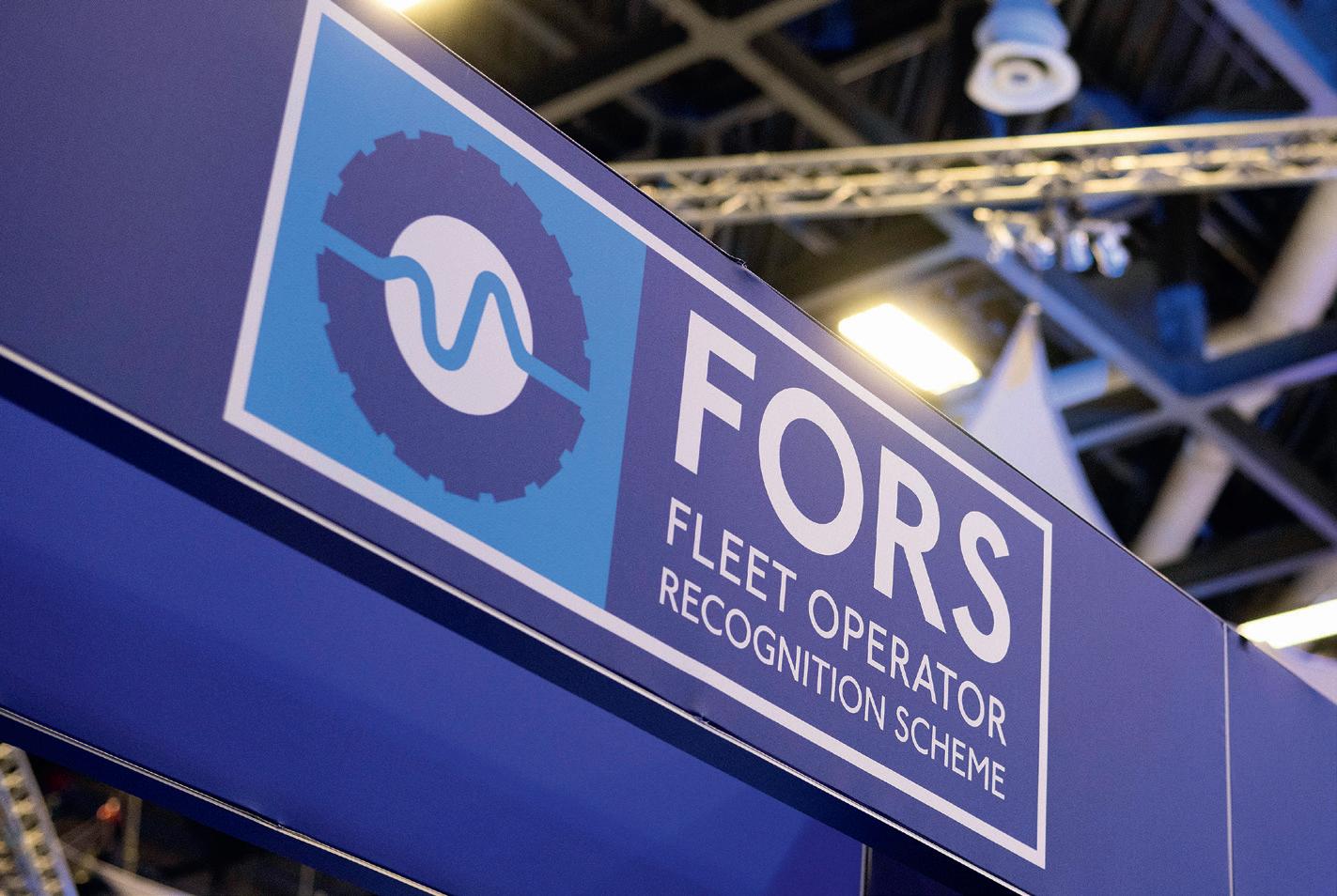
feedback via an Accredited Operator Survey. Last year we heard from nearly 500 operators, we’ve analysed the feedback and we’re now making action plans to act on this.”
FORS has to ensure its relevance to all fleet operators, Davies said, which will ultimately lead to improvement in being safer, smarter and greener. “FORS must be meaningful, welcoming and a valued service. It’s scalable and relevant to all different types of operations and also it’s transferable. For example, we’ve been working with cargo bike fleets. In fact, a number of cargo bike operators have just been accredited. FORS really does accommodate all of the sectors within the transport industry.”
Looking ahead, Davies wants to move the dial up even further and expand the scheme. He said: “We want to be engaging with devolved government, municipal mayors and local authorities to really put roots down at both a regional and national level, as well as other territories and make FORS a scheme that can be parachuted into any city. Remember, the basic principles of operational safety are the same in any territory regardless of where you are.”
The passion Geraint Davies has for the industry, and in particular for FORS, is tremendous. He is also extremely approachable and we’re sure he would welcome a chat with any FORS Operators.
Industry Interview spring 2024 STANDARD MAGAZINE | 33
◼
Right: Geraint Davies is keen to see more van fleets signing up to FORS
Below: There are plenty of enhancements in the pipeline for FORS this year
We don’t believe in i t.
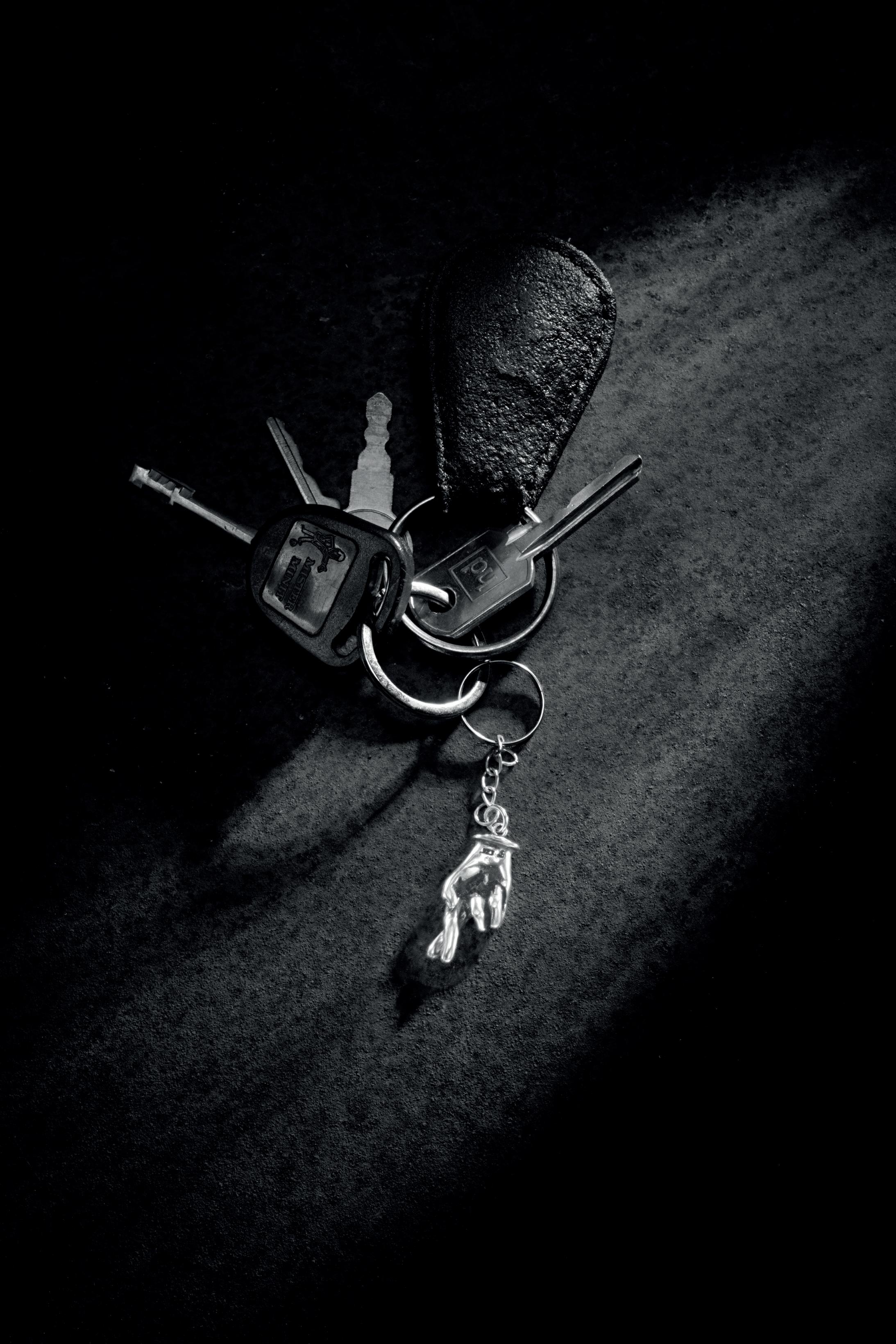

34 | STANDARD MAGAZINE spring 2024

Eliminate the stressful and time-consuming job of manually chasing, collecting and downloading driver cards and vehicle unit tachograph data
Let the NEW Tachomaster DOT device remotely download your tacho data daily. Monitor driver availability, work, drive and rest periods live and massively reduce driver infringements.
With zero upfront costs, no additional sim card charges and pay as you go What have you got to lose?
spring 2024 STANDARD MAGAZINE | 35
PER VEHICLE PER MONTH REMOTE TACHO DEVICE £5MORE PER VEHICLE PER MONTH(OPTIONAL) ADD VEHICLETRACKING FOR Tachograph Analysis I Vehicle Tracking I Transport Management System Driver Licence Checking I Walk-Around Vehicle Checks I www roadtech co uk WWW.TACHOMASTER.CO.UK CALL 01923 460000 The DOT device is only available for Tachomaster customers and Tachomaster charges apply
FREE ta ch o downloa ds
£14.95
Get stress

What will it take? —
To stop your drivers from driving under the influence of alcohol?


Vehicle alcohol ignition interlock device from Dräger
The Interlock® 7500 device from Dräger is designed to prevent drivers from driving under the influence of alcohol. It disables the vehicle if levels of alcohol are detected that are higher than the legal limit. Protecting drivers, the public and your reputation. draeger.com
Classified 36 | STANDARD MAGAZINE spring 2024













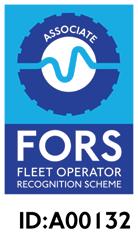

RE-Tech.co.uk 0845 468 0812 safe | smart | efficient | compliant CONTENTS: 1 x 7” LCD Monitor Screen 1 x AI Rear Camera 1 x 10 Metre Cable 1 x Warning Buzzer 1 x Remote Control 1 x Power Cable Optional extra: 1 x Universal Ball Mount Image AI algorithm On-screen warning Voice warning AHD image quality IP69K waterproof Super night vision
AI Rear View Camera
Words: Steve Banner
SHATTERING TRANSPORT WORLD’S FINAL GLASS CEILINGS
The International Women’s Day message of ‘Invest in Women’ has huge resonance for the transport industry

Prejudicial attitudes towards women among what is still a male-dominated workforce have gradually changed for the better over the years – and female employees are now, quite rightly, occupying key roles at all levels of the fleet sector. Yet a glass ceiling remains in some businesses and while it may have huge cracks in it and be close to collapse, it hasn’t shattered yet.
One of the best ways of encouraging women to enter the sector and overcome any remaining barriers is to cite examples of those who have already joined and are enjoying successful careers. The Standard is delighted to present one of these –

Nerija Smilgeviciute – and we know there are many more out there.
Nerija Smilgeviciute is no stranger to the transport industry. Her first taste of it was back in 2008, when she was involved in the setting up of a small, family-owned, furniture removal company.
The business grew and, as a consequence, she decided to obtain a transport manager’s Certificate of Professional Competence (CPC) in 2014. Her grounding in transport resulted in her occupying a variety of different roles across what has always been a demanding sector, including logistics co-
Industry Interview 38 | STANDARD MAGAZINE spring 2024
Nerija Smilgeviciute – “FORS is helping me with my continuous professional development”

ordinator, transport supervisor, transport manager and driver trainer. Five years ago, she became a FORS Auditor and her involvement with FORS has grown ever since.
She said: “These days I lead the FORS Quality Assurance team in the work it does to ensure the FORS Standard is upheld. This means ensuring that the quality and consistency of audits is maintained through a strong collaboration between different stakeholders within the scheme.”
FORS has undoubtedly helped her with her career development, she says. “Since I joined the FORS community in 2019, my professional career has accelerated and progressed
enormously. In 2022, I was invited to join Sopra Steria (FORS concessionaire) as a quality specialist and was promoted to FORS Quality Assurance Team Manager in 2023.
“FORS and Sopra Steria have provided me with numerous opportunities to take part in different projects and industry events. They have included presenting at the FORS Conference in 2023.
“FORS is helping me with my continuous professional
Industry Interview spring 2024 STANDARD MAGAZINE | 39
Above: Female employees are now occupying key roles at all levels of the transport sector
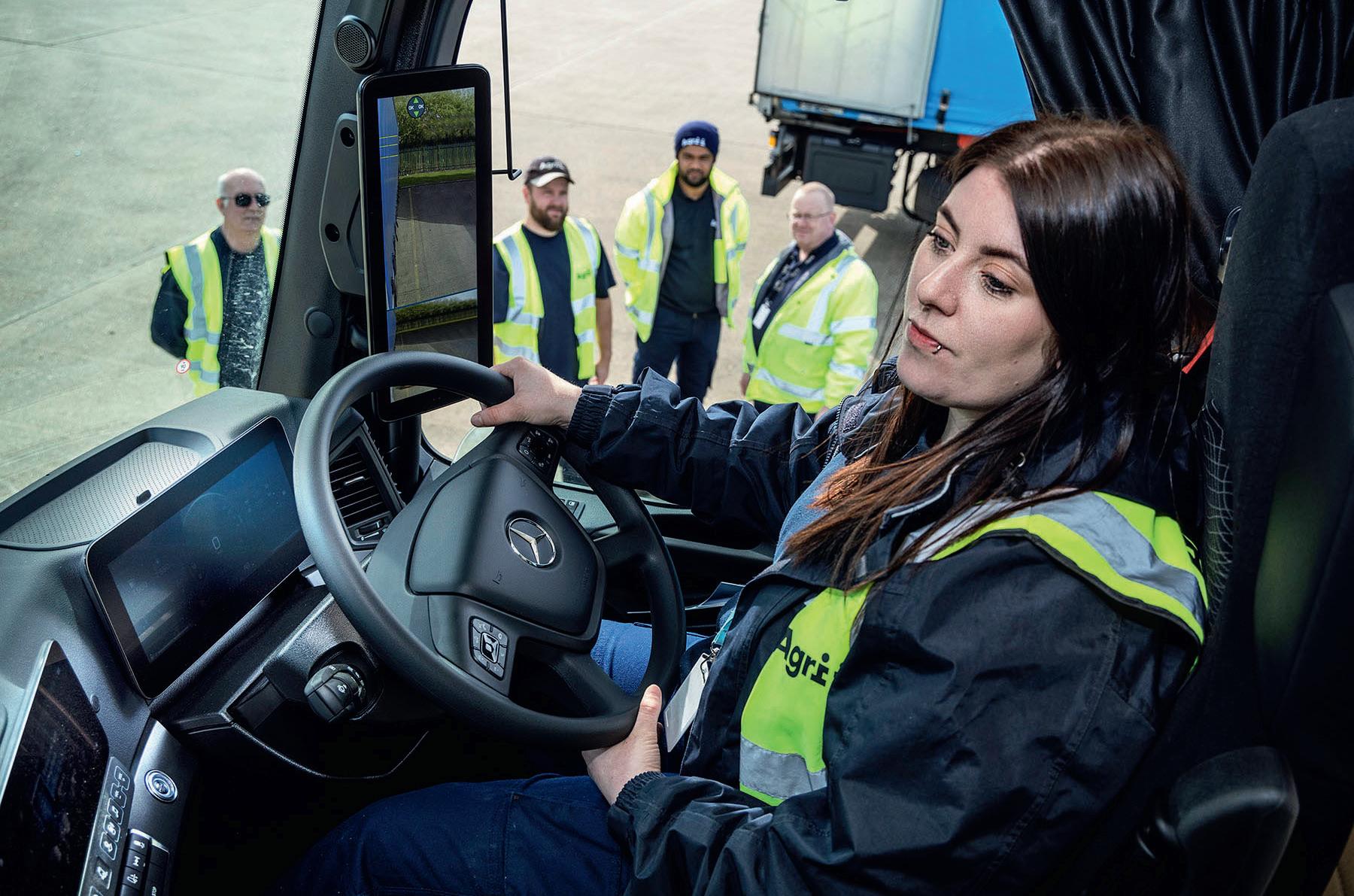
At times it felt as though I was going to be trapped in low value jobs
development and I’m currently studying for a passenger transport management CPC. What’s more, I receive a lot of mentoring support.”
Not that progress has always been easy for her.
“Bearing disproportionate responsibilities for childcare and domestic work as well as being impacted by an unhealthy family environment restrained me from applying for promotions in the past,” she recalls. “At times it felt as though I was going to be trapped in low value jobs.
“Representing an ethnic minority and being an immigrant to the country speaking in a strong foreign accent presented its own challenges. The fact that the transport industry is highly technical, engineering-focused and heavily male-dominated did not make things any easier either.
“As a younger female I have always felt the need to prove myself and break down pervasive stereotypes and perceptions to be respected and earn my place at works.”
Attitudes towards women in the sector are changing however, she says.

Industry Interview 40 | STANDARD MAGAZINE spring 2024
Above: The transport sector is a dynamic industry with plenty of opportunities Below: More women in transport roles will bring major benefits to the industry
“I have noticed a positive shift in gender equality since joining the transport industry, including more and more women undertaking core leadership positions. I think the recent increase in remote home-based working and influential leadership success stories will further accelerate the shift to a more gender-diverse workplace.
“When I joined FORS in 2019 women made up around five per cent of FORS Auditors, but in more recent years more and more women have been undergoing FORS qualification training. When I joined the FORS Quality Assurance team in 2022 I was the only woman. Today 60 per cent of the team is female.”
She feels that women succeeding in the transport industry today can serve as an inspiring example to the next generation.
International Women’s Day should be broken down and no longer act as barriers to limit or supress anyone’s ambitions and aspirations in life.
“We all can and should play our part in helping to make it happen by sharing our success stories and inspiring others by creating a supportive, encouraging and welcoming environment.
“I would give my full support to any woman considering a career in transport. It is a dynamic industry with plenty of opportunities to diversify your career. With more and more women joining the industry, the support networks and collaboration are strong.”
I would give my full support to any woman considering a career in transport
She said: “As a mum to two daughters I am raising my girls to be resilient and independent. I want them to adopt the mindset that the only obstacles holding them back from their aspirations in life are them and their willpower.”
What does the International Women’s Day message of ‘Invest in Women ’ mean to her? She said: “Where you are born and your gender shouldn’t determine your success story. Culture, religion, gender, stereotypes, societal perceptions and all these other factors and challenges we are sharing on
More women in leadership roles will bring major benefits to the industry, she believes.
“More diverse leadership brings more diverse strengths, different views, perspectives, and experiences within the organisation. Research has proved that such organisations with more diverse leadership perform better, with women scoring higher at certain leadership skills such as communication, taking initiatives, self-development and resilience.
“Having more women in leadership positions will allow us to break down pervasive stereotypes and perceptions and create a more inclusive work environment, with the ultimate win of increased economic success for businesses and society. “ ◼

Industry Interview spring 2024 STANDARD MAGAZINE | 41

VOLVO FH AERO TAKES ENERGY EFFICIENCY TO A HIGHER LEVEL
Innovative new features plus biofuel and electric powertrain options help raise the game for green transport
Words: Trevor Gehlcken
Volvo Trucks’ iconic FH range has welcomed a new family member with the Volvo FH Aero. Featuring an optimised aerodynamic design and innovative new features, the FH Aero takes energy efficiency to a new level. The model is available in four powertrain variants, including biofuel and Volvo’s battery electric technology.
With improved aerodynamics and new technology, such as Volvo’s Camera Monitoring System that replaces traditional exterior mirrors, the new FH Aero can reduce energy consumption and emissions by up to five per cent, claims the truck builder.
Most efficient
Roger Alm, pz resident of Volvo Trucks, said: “The new Volvo FH Aero is our most efficient truck ever as we continue to reduce CO2 from our entire product range. This is a Volvo truck at its best – a safe, beautifully designed, superior truck for tough long-haul tasks.”
Selected as International Truck of the Year 2024, the Volvo FH Electric will also be offered in the new Aero version, an energy-efficient addition to Volvo’s already wide range of electric trucks. Furthermore, the Volvo FH16 becomes the most powerful truck in the industry with an all-new efficient 780hp diesel engine for the toughest assignments.
Lower consumption
Regardless of which powertrain customers choose – electric, gas or diesel – all variants will benefit from lower energy consumption, longer range and a superior level of safety and driving experience.
The new models will be rolled out step by step to markets during 2024-2025 in four versions – the FH Aero, FH Aero Electric, FH Aero gas-powered and FH16 Aero.
The front of the Volvo FH Aero cab has been extended by 24cm versus the regular FH. This has been instrumental in creating a more aerodynamic truck cab. Not only does the better aerodynamics give lower fuel consumption – it provides better driving stability in windy conditions.
The improved aerodynamics also benefit the FH Aero Electric model through better free- rolling properties.
This allows increased energy regeneration for feeding back into the battery while braking or going downhill, ready for use when needed in the next acceleration or uphill climb.
The modern new face of the FH Aero features a bold, big and easily recognisable Volvo Iron Mark – the largest in modern times on a Volvo truck – as well as the Volvo Spread Word Mark, clearly showing that this is the latest model from Volvo Trucks.
Improved safety
A new Camera Monitoring System contributes to both aerodynamics and safety. This new solution opens the visual field for the driver, improving the safety for the driver as well as the
surrounding road users.
The camera system has a positive impact on the driver’s visibility in rainy and dark conditions, but also in direct sunlight and when driving in tunnels. When driving with a trailer, the camera system has an auto-panning function, following the turning trailer. ◼



New Launch spring 2024 STANDARD MAGAZINE | 43

SEEING A CLEAR WAY TO BETTER ROAD SAFETY
A system built by global tech firm Seeing Machines is helping FORS Operators towards the goal of zero incidents
One of the main aims of FORS since its very inception is to make the roads of Britain safer. There are many ways in which this battle is being fought – and through its efforts FORS Operators are playing their part, cutting down on workrelated incidents involving trucks and vans. One surefire way of achieving a better safety record is by installing ‘FORS Drive Safe’ – a system called Guardian, built by Seeing Machines, a global technology company specialising in artificial intelligence and machine learning.
Here we put Seeing Machines’ Max Verberne in the Standard spotlight…
Q: Who is Seeing Machines?
A: Seeing Machines is a global technology company specialising in artificial
intelligence and machine learning, with the goal of getting everyone home safely.
Since launching more than 20 years ago, our mission has always been to achieve zero transport fatalities. We do this using intelligent face and eye tracking technology that enables machines to see, understand and assist drivers, deployed across several cuttingedge applications in commercial road transport, automotive, mining and aviation.
We are headquartered in Australia with offices and people in the USA, UK, Europe and Japan, and a growing global distribution network.
Q: How frequent is driver fatigue/ distraction?
A: More frequent than you may realise. Based on recent data from our fatigue and distraction technology, Guardian,
across the Australia and New Zealand (ANZ) region for example, we have seen an average of one distraction event every single minute, and over 15 confirmed fatigue events every hour. And this was just a small sample of all drivers on the road at any given time.
In the UK, 10–20 per cent of all collisions are estimated to be caused by driver fatigue and one in eight drivers admit to falling asleep at the wheel. Furthermore, four in ten fatigue-related crashes involve someone driving a commercial vehicle.
Distraction, too, is prevalent among drivers, with potentially devastating consequences.
In fact, one insurance company reports that almost 20 per cent of drivers admit being distracted and not paying attention was the cause of their most recent car incident.
Q&A 44 | STANDARD MAGAZINE spring 2024
FORS Drive Safe is described as like having a mate in the cab
Q: Is fatigue more common at night/ hours of darkness?
A: Not always. Fatigue can happen any time of the day or night. All day, every day. In our recent Guardian Insights Report (focused on the ANZ region) we found that most fatigue events occurred between the hours of 4.00am and 5.00am, which aligns with studies around people’s body clocks (for most people, the urge to sleep arising from the circadian rhythm peaks between 2.00am and 4.00am). However, in the UK, brake. org.uk notes drivers are 20 times more likely to fall asleep at the wheel at 6.00am than at 10.00pm. So, it appears the early morning does tend to be the most dangerous time for driver fatigue.
In the UK, 10–20% of all collisions are estimated to be caused by driver fatigue
Q: Does Seeing Machines offer advice on avoiding fatigue/distraction while driving?
A: Seeing Machines is not equipped to do that. However, we do recommend a commonsense approach when driving, and lifestyle choices are ever important for professional drivers. There are obvious tips, don’t use your phone and don’t drive if you know you are tired. However, as we are not experts in this space, we would choose to partner with companies specialising in fatigue management that can assess an individual’s situation and provide tailored recommendations based on a number of health and lifestyle factors.
Q: Does Seeing Machines offer driving technique advice/areas of improvement?
A: We equip our customers to do this themselves. Data from Guardian Live is intended to assist customers to identify areas for improvement. The Guardian Live web platform stores data and video of fatigue and distraction events, providing customers secure access to view this information,
24/7. The comprehensive, near real-time driver and vehicle data can be used to understand situations as they evolve, but also enables customers to improve driver training, education and safety programmes and identify operational improvements that help keep their drivers and other road users safe.
Q: Any statistics on how your technology has reduced incidents?
A: Guardian is used by over 800 fleets worldwide and prevents thousands of high-risk incidents a day. The technology, scientifically proven to reduce fatigue related events by more than 94 per cent, is driven by decades of Human Factors research, with monitoring and intervention by real humans. In fact, the human intervention aspect of our solution is unique and is what increases the effectiveness of our technology by 40 per cent in terms of fatigue-related driving events, relative to in-cabin alerts only. These in-cabin alerts can reduce events by around 66 per cent, which is great, but this jumps to around 94 per cent with real-time management.
Q: Any driver feedback or testimony?
A: While some are initially resistant to the technology, once they realise it is not CCTV and is genuinely designed to protect them, their attitudes shift dramatically. We’ve had a number of drivers describe it like ‘having a mate in the cab’, keeping an eye out for them. I think there is an appreciation by drivers that it’s making their job easier and safer. When interviewed recently, one driver said: “I just find it’s like a friend. If you’re dozing off or having a lapse in concentration there’s someone there to tap you on the shoulder.”
Q: In basic terms how does the technology work?
A: Guardian’s in-cab sensor monitors for signs of fatigue or distraction and warns drivers through a set of audio, visual and haptic alerts, providing protection in real-time. Event data is also sent to a secure cloud-based platform (Guardian Live) and our 24/7 Guardian Analysts review the footage, confirm the event and where necessary notify the customer.
Q: How easy is the equipment to install?
A: Guardian Generation 3, our latest solution, takes our certified installers less than two hours to install the system into a vehicle.
Q: Who fits the equipment?
A: We have a global network of certified installers and technicians who install and maintain Guardian equipment for customers. We also offer training to customers for those interested in having their own in-house capability. Two separate training modules include ‘Installation certified technician’, or a ‘Guardian maintenance technician’ –offering customers a choice.
Q: How intrusive is the installation for the driver?
A: Guardian Generation 3 is a compact allin-one device and aesthetically designed to be unobtrusive and integrate neatly within the cabin. The system has a small in-cabin footprint with no additional cables or antennas and can be mounted in different places to meet different fleet requirements and ensure optimal field of view.
Once the system has been installed, it automatically powers up when the vehicle is started. The driver doesn’t need to do a thing, except focus on driving safely. ◼

Q&A spring 2024 STANDARD MAGAZINE | 45
FORS Drive Safe has been developed by global tech firm Seeing Machines
DRÄGER PROVIDES THE ULTIMATE DETERRENT TO DRINKING AND DRIVING AT WORK
Since 1889, its products have protected, supported and saved lives
Despite the dangers of drinkdriving being well known for many years, a significant number of people still get behind the wheel after consuming alcohol. After a drop in incidents during the Covid pandemic, the number of offences is rising again.
It is imperative that transport operators ensure their drivers have not been drinking alcohol before they take company vehicles out on the road. Apart from the obvious danger of causing death and injuries to other road users, the company logo will usually be emblazoned on the side of the vehicle, leading to a negative impact on possible new clients.
After a crash comes a multitude of problems. A vehicle out of action, a driver injured or possibly dead and a huge amount of legal hassle when other road users have been affected.
So how do transport chiefs ensure that their drivers are fit to get behind the wheel of a van or truck?
Let us introduce you to Dräger, an international leader in the fields of medical and safety technology. Since 1889, Dräger products have protected, supported and saved lives. For more than 65 years, Dräger has been a world market leader in breath alcohol measurement. Its alcohol ignition interlock devices have been established for more than 25 years and are used globally, across Europe, the USA and Australia.
Safety for all road users
Alcohol interlock devices systematically reduce the risk of alcohol-related incidents on roads and in workplaces as they safeguard against workers driving under the influence of alcohol. These devices increase the safety for

employees, passengers and other road or workplace users. Installed in a car, truck, or bus they prevent an impaired driver from entering public or private roads and, when used in forklifts, cranes, other special purpose vehicles or machinery, they can reduce the risk of alcoholrelated incidents in work environments.
Benefits of alcohol interlock devices
The Dräger Interlock 7500 is an alcohol ignition interlock device that prevents a person under the influence of alcohol from starting a vehicle. A handset requests a breath test from the driver and analyses and measures the alcohol level in the sample. It then acts as an interface with a control unit, which releases the starter relay of the vehicle or, if an alcohol value above a pre-set limit is detected, it prevents the engine from being started.
A quick start-up time ensures that work processes are not affected. The Interlock device has an extremely short warm-up time. At temperatures of more than 0 °C, it is ready for immediate use. Below 0 °C, it is still ready in seconds.
With an approved temperature range of -40 °C to 85 °C, the device works reliably under all kinds of conditions.
A breath sample can be given in no time and the navigation on the display, which uses colour LEDs, is easy to follow.
The device specifically measures alcohol and the result is reliable and precise. It is able to identify whether the alcohol detected in the breath sample is actual breath alcohol or only mouth alcohol, for example from mouthwash. Also, attempts to bypass or manipulate the device are identified and stored in the system. The data log saves all relevant events such as date, time, submission or refusal to submit an alcohol test, measured alcohol concentration, engine starts and stops and any attempts to tamper with the interlock device.

For further information please visit www.draeger.com
Advertorial 46 | STANDARD MAGAZINE spring 2024
Above: A handset requests a breath test from the driver and analyses and measures the alcohol level in the sample

100% electric
RENAULT TRUCKS E-TECH
At Renault Trucks we are pioneers in electric vehicles. Our experience, and that of our expert partners, can help you introduce electric vehicles to your fleet, and reduce CO2 emissions to the benefit of us all.
renault-trucks.co.uk
spring 2024 STANDARD MAGAZINE | 47
FORS AFFINITY PARTNERS
Discover the extra benefits of FORS through our range of Affinity Partners
FORS Affinity Partners offer exclusive discounts on products and services that are aligned to the FORS Standard and will help you to comply with legal/contractual requirements, as well as improve on safety, emissions and efficiency. Fill out the enquiry form via the QR code if you’re interested in hearing more about one or more of our partner offerings
◼ FORS Driver Licence Checking Service
Designed to help you meet requirement
D1 of the FORS Standard. The service can check foreign licences, plus you can access your drivers’ historical licence checks via a specific report available to download from the system.
◼ FORS Vehicle Graphic Service (FORS VGS)
Providing high-quality FORS ID graphics and warning signage graphics for your vehicles. If you’re operating a vehicle designed to hold more than 16 people, V6 in the FORS Standard requires you to display blind spot warning signage, which comes free with every FORS label ordered!
◼ FORS Fuel Card Services
Want to save money on fuel? You can save up to 10p per litre and receive a free fuel card as a FORS operator. You’ll have online account access to manage your cards, run reports and view invoices that are HMRC compliant. The cards are usable at all major fuel sites.
◼ FORS Tacho Service
A modern, intuitive tachograph analysis platform designed to ensure accurate and streamlined driver and vehicle reporting. It’ll help you meet D7 requirement of the FORS Standard, and you’ll receive a free two-month trial when you sign up.
◼ FORS Fleet Management System (FORS FMS)
A secure online management system of all your FORS policies, documentation and fleet data. Suiting fleets of all sizes, it provides a robust audit trail. Users are 17% more likely to have a successful
first audit using the tool. Receive a 30-day free trial, plus your first three months free.
◼ FORS Legal
Provided by Backhouse Jones, the awardwinning road transport solicitors. Join the BACKup scheme for quick access to transport lawyers for a fixed monthly price and receive a 10% discount. The scheme is proven to resolve 96% of all queries by phone or email.
◼ FORS Driver Handbook
A mobile app with a web-based management system, allowing you to communicate with drivers effectively. Available for all vehicle types, links to the Official Highway Code and contains driver declarations. It includes monthly toolbox talks and meets 30 communication requirements across the FORS Standard.
◼ FORS Insurance Services
An insurance offering that considers your FORS accreditation, plus a bespoke FORS insurance package that’ll look to save you time and money when compared to industry-standard offerings. Includes a dedicated claims team, reduced excess if you produce prompt claims reports, flexible driver age allowances, enhanced cover across sectors, flexible Year-1 policies and Long-Term Arrangement.
◼ My FORS Transport Planner
Move away from manual planning to automated and optimised routes, generating significant savings of up to 30% and reduced emissions. You’ll also receive a free benchmark report to validate the savings and efficiencies.

This is a pay-as-you-go tool where FORS operators get a 10% discount.
◼ FORS SSIP
FORS SSIP helps contractors demonstrate their health and safety compliance to clients and meet construction and related industries’ pre-qualification requirements. Just by being a FORS operator, you’ll receive a 30% discount for a full SSIP and a 15% discount on CITB training courses.
◼ FORS PCN Management Service Service that offers an end-to-end solution for PCN Management. Designed to help you navigate urban environments and reduce your PCN liability, your account will be monitored and managed by an experienced service executive. You’ll receive full visibility of your ticket status via an online portal, and detailed management information identifies hotspots to avoid any future fines.
◼ FORS Fuel Pricing and Analytics Aims to assist operators in reducing spend when purchasing fuel, covering all purchase methods and various grades including diesel and HVO. The online portal includes independent fuel price information and an industry-standard fuel surcharge mechanism. Also offers decarbonisation strategies, market reports and procurement reviews. Save 5% using code FORSoperator5. ◼
Have any questions?
Speak to our friendly FORS Helpline team today on 08448 090944 enquiries@fors-online.org.uk
48 | STANDARD MAGAZINE spring 2024








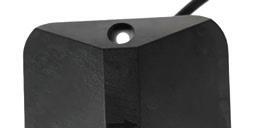







Classified fonix-v2.indd 1 Is your fleet ready for DVS 2024? Get compliant with the new Direct Vision Standard requirements Accurate AI camera technology Ensuring drivers are only alerted when vulnerable road users are around a vehicle rather than static objects Industry-leading experts With over 20 years of experience, fleets can put their trust in us to install kit that is installed correctly, fully compliant, and cost-effective Why choose VUE as your Progressive Safe System supplier? vuegroup.org Become DVS compliant today, call our friendly team on 0161 877 2257
Introducing the S-Cap from FuelDefend Global Ltd
The world’s first Bluetooth & GPS Tracking replacement fuel cap with real time anti-theft notification
With its unique design the S-Cap offers a level of security unrivalled in the market today, featuring a LED Security Indicator, Anti-Tamper protection, Locking & Unlocking real time notifications and CCTV, Lights, Siren and Panic Button integration using the T-50 module.
SCAP-01 Technical Specifications
Fitment Type
80mm Double Bayonet
Installation Plug & Play

Hercules the Hero of Greek mythology is back!
Connection Bluetooth (Wireless)
Monitoring Vehicle Tracking
Notifications Tamper Detection
Optional Fuel Tank Alarm
Power Source Long Lasting Battery
Device Material Engineering Polymer
Weight
FuelDefend Global introduces the Hercules. The world’s only floating ball device designed with a FlexiFlow System, allowing the fuel filler nozzle to go from a vertical filling position for articulated vehicles to 30 degrees for rigid body vehicles, whilst maintaining a flow rate of 110 L/min without splashback or cut-off utilising our Advanced Fuel Dissipator. This is better than anything else on the market today, Hercules is the most cost-effective floating ball device available.
0.35 kg
The Features
• 80mm double bayonet
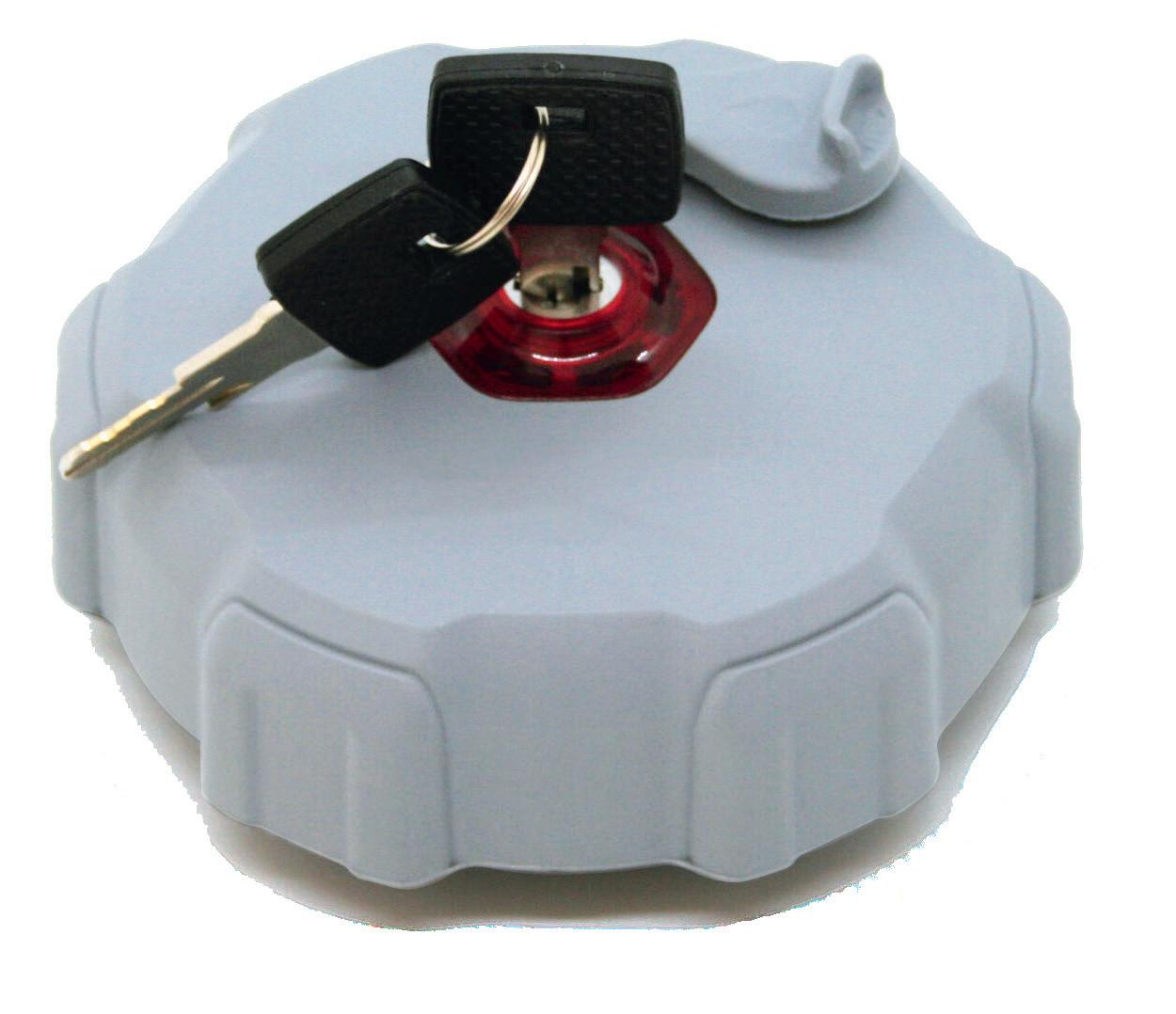
Take Fuel Security to the next level and add the S-Cap to any 80mm FDG Anti-Sipnon
• External device
• Advanced Fuel Dissipator
The Journey

• FlexiFlow Unique System
• 6 Year Guarantee
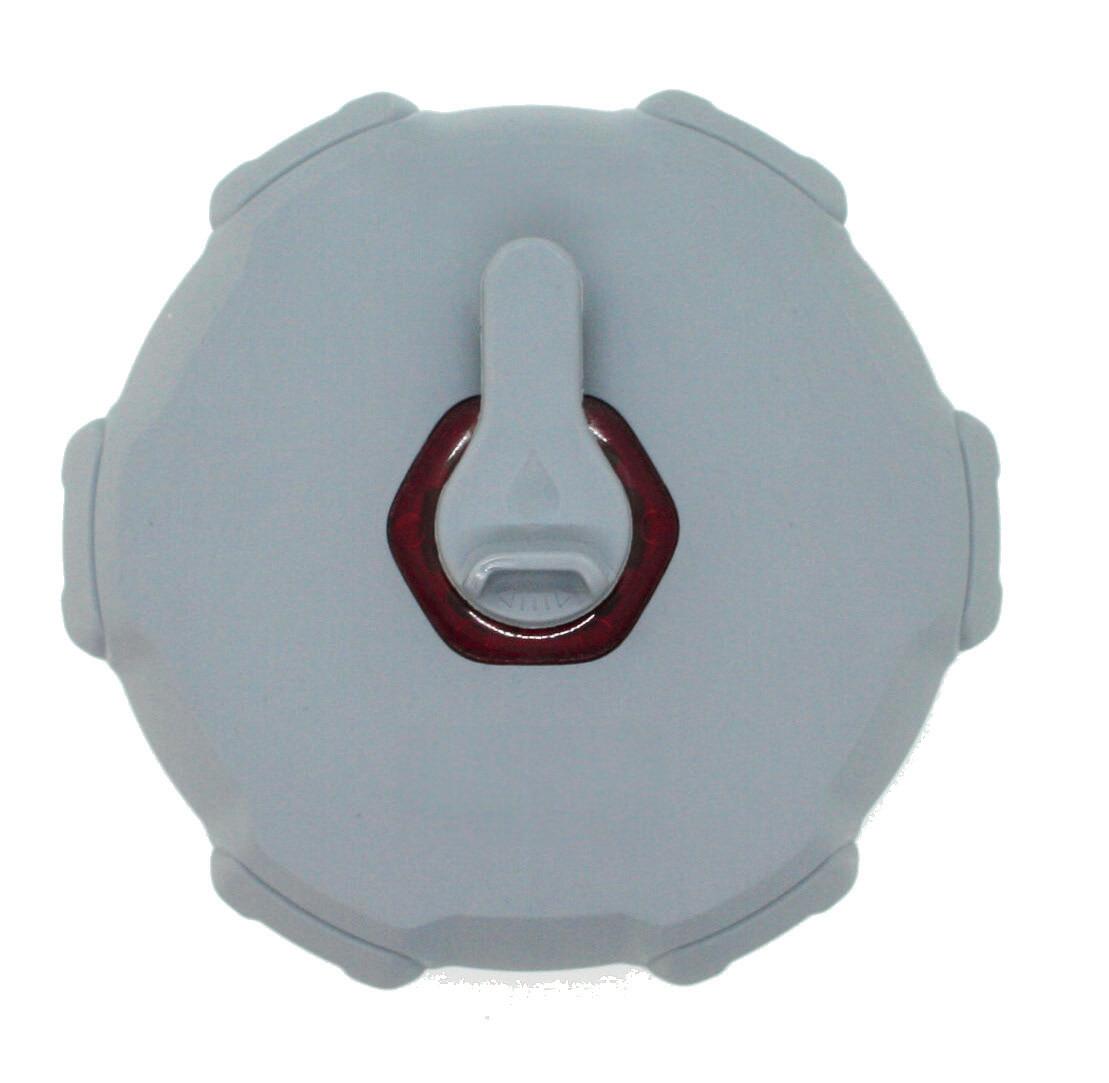
You can depend on FuelDefend
Our technical team reviewed all floating ball/valve devices on the market and obtained feedback from customers for all. The answer was simple or so we thought! Design a device that would fit various vehicles, high filling speeds, reliability, durability at the lowest cost. It took over 2 years of testing, development and prototypes before we gave it to a select base of customers to live test on working fleets. We had a winning design, crucially, it could not be siphoned as other floating ball devices. Hercules is back.

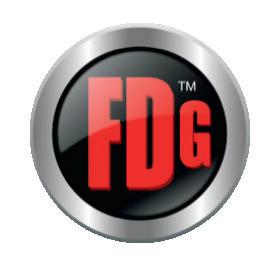

New Launch fueldefend.com
fueldefend.com



Achieveyour FORSaccreditationwith Fastview360
Whychooseus?

•UKbasedwithanationwideengineeringteam
•Easytouseremoteaccessplatform
•Dedicatedcustomersupport
•Fullyadaptableforanyvehicletype
•Integrationwiththirdpartysuppliersavailable

"Thelatesttechnology, inhardwarebuilttolast"
DamionDavis,ManagingDirector


AlreadyFORSaccredited?
BenefitfromourFORS membershipoffers
Notaccreditedyet? Wecanhelpyouachieveyour FORSaccreditation!





fueldefend.com back!
UNDERSTANDING THE CAUSES OF TYRE WEAR
Various factors come into play when calculating how safe and cost-effective your truck tyres are
With safety-critical components such as tyres, it is vital that transport operators understand the potential causes of tyre wear. Hankook Tyre UK outlines how inflation pressure and wheel alignment can affect all types of vehicle.
Inflation pressure
One of the most important aspects of tyre maintenance is the correct inflation necessary to carry the load and avoid damage. Driving with the wrong inflation, particularly grossly under inflated or over inflated, is dangerous and can cause critical damage or sudden failure and premature removal from service.
Hankook suggests that tyres should be checked at least once a week and always before a long distance drive. In the space of one month, a tyre can lose up to 10 pounds of air pressure.
It is also advisable to take into account the axle loadings for the loads imposed when setting inflation pressures.
Compensation for heavier loads can be made by increasing inflation pressures – though make sure not to exceed the maximum inflation rates for the tyre, or maximum axle load.
Under inflation is the worst enemy for tyres. It causes increased tread wear on the tyre shoulders, reduces the tread contact area on the road surface and also generates excessive heat, affecting the tyre’s durability. Soft tyres also make a vehicle work harder, meaning that fuel efficiency is reduced due to increased rolling resistance.
Over inflation, on the other hand, is also detrimental, as too much air pressure causes the centre of the tread to bear the majority of the vehicle’s weight. This leads to more rapid wear to the tread centre, which will shorten the lifespan of the tyre.
Wheel alignment
There is more to alignment than most people can understand. Hankook outlines the various different components needed to achieve total wheel alignment.
Camber is the inward or outward tilt of the steering axle tyres when viewed from the front. Positive camber is the top of the tyre tilted out; negative camber is the top of the tyre tilted in.
The angle that a centre line of the wheel is inclined from the vertical centre line perpendicular to a flat road is called camber angle.
Camber is meant to compensate for the downward forces of added loads. Correct camber settings help the tyre to maintain a firm and even tread contact with the road. While the vehicle is travelling under loaded conditions, often one side tyre tread wear can occur on the outside or inside edge of the tyre due to incorrect camber setting.
One of the most important aspects of tyre maintenance is correct inflation
Toe is the inward or outward pointing of the wheels when viewed from the top of the vehicle. The goal is to have zero toe when the vehicle is loaded to its normal operating condition.
Toe-in refers to the inclination of the wheels of a vehicle so that the pair of Words:
front wheels are set inwards facing.
The purpose of toe-in is to counteract some of the forces that pull the wheels outwards as they roll along the road under engine power. Correct toe-in will ensure the direction of travel is correct as possible for forward direction of travel, insufficient toe-in settings will result in steering instability.
If toe-in or toe-out is insufficient or excessive, the tyre wear will be affected and appear as feathering at the edges of the tread.
Caster is the forward or rearward tilt of the king pin of the steering axle when viewed from the side. Caster is generally not considered to have a great effect on the tyre wear.
Caster is the condition where the king pin is inclined with the top of the pin angled rearward, similar to the front forks of a bicycle. Caster angle is meant to compensate for the resistance that the tyres encounter as a result of drag forces against the road. Caster angle should be the same for both wheels on a given axle, or the result will be vibration and abnormal tyre wear.
Too much caster will more than compensate for the amount of drag, but it will also create additional difficulty in steering.
Too little caster makes steering become lighter, but also unstable. The caster angle should be checked as it can be distorted by impacts on the tyre or by rough driving conditions.
It must be noted that tyres are not deigned or manufactured to wear unevenly and the wear, handling and mileage performances of the tyres are influenced by the vehicle dynamic set-up, mechanical and component wear and the tyre pressures used, so it is important to recognise an important fact that tyres are not a maintenancefree component. ◼






Advertorial 52 | STANDARD MAGAZINE spring 2024
Hankook Tyre









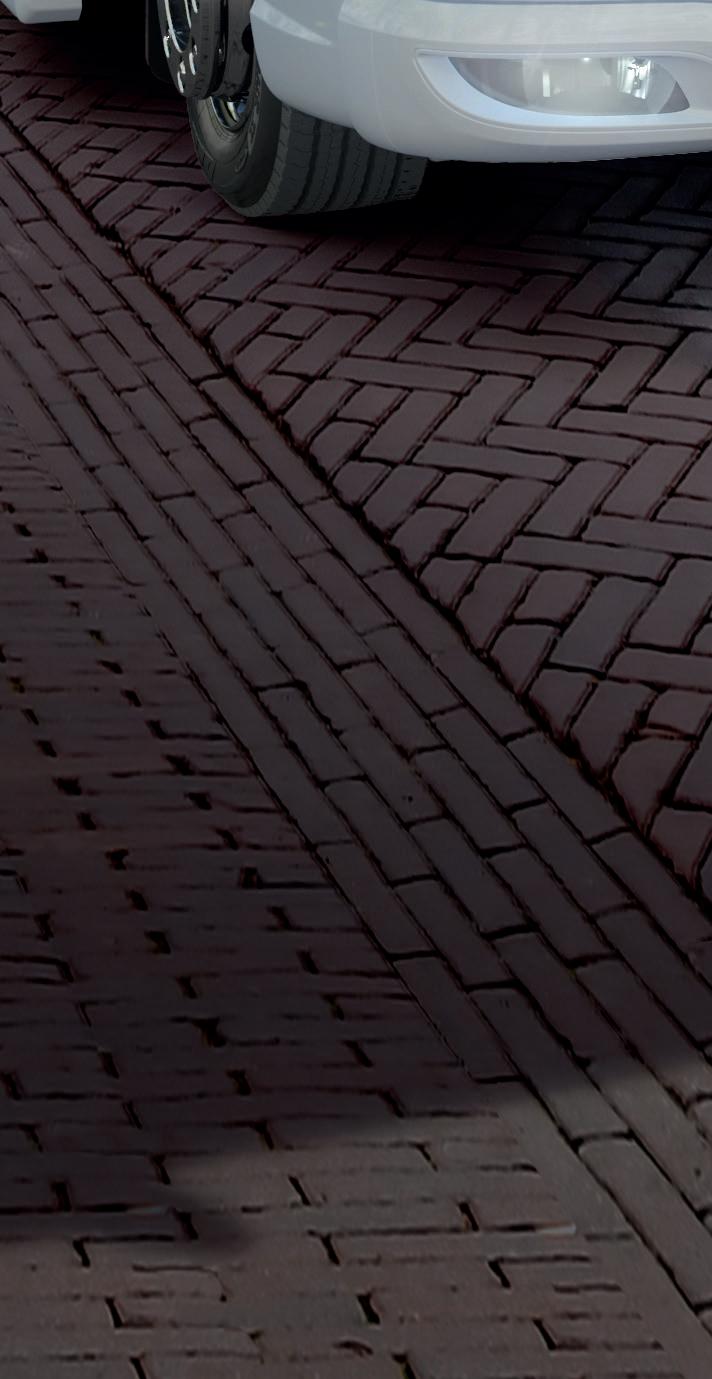
Go electric and feel at home in the city!
Introducing the New Generation DAF XB Electric – the truck of choice for the zero-emission city. Clean, quiet, extremely safe, and highly manoeuvrable, the DAF XB is ideal on busy urban roads for everything, from local distribution to refuse collection. In today’s eco-friendly cities, the new DAF XB Electric feels right at home! WWW.STARTTHEFUTURE.COM






STANDARD MAGAZINE | 53 A PACCAR COMPANY DRIVEN BY QUALITY NEW GENERATION DAF XB
ELECTRIC VEHICLE ALARM SYSTEM
Our range of alarms suit all types of electric and hybrid vehicles from cars through to vans, trucks and buses.
Our acoustic vehicle alerting system (AVAS) will meet UNECE regulation 138 and will be possible to be re-programmed to meet changing requirements.
amber-valley.co.uk


EUROPE’S LARGEST REVERSING & SAFETY EQUIPMENT MANUFACTURER


Alternative Fuel
SALES@TOTALKARE.CO.UK Manufactured in the UK, Totalkare’s high quality prefabricated steel inspection pits enable easy access to the underside of your vehicles and can be supplied with a range of additional equipment including pit jacks, brake testers, shaker plates, oil management products and more. PRE-FABRICATED STEEL VEHICLE INSPECTION PITS
• Leicestershire LE8 8UD
T:0121 585 2724 / E:
European Head Office Amber Valley Developments LLP, 12 Churchill Way,Fleckney
Tel: +44 (0)116 240 2968 Fax: +44 (0)116 240 2941 Email: sales@amber-valley.co.uk

WillyoubereadyforTransportforLondon'sDVSupdate, theProgressiveSafeSystem(PSS)?
PSSisrelevanttovehicles12T+andunder3starrated
•Cameramonitoringsystem
•BlindSpotInformationSystem(BSIS�
•MovingOffInformationSystem(MOIS�
•Audiblewarningalerts
•Visualwarningsignage
FormorePSSinformation,scantheQRcode









Take the hassle out of your tachograph analysis with FORS Tacho Service
• Manage drivers hours with ease
• Stay compliant with simple dashboards
• In-depth scheduled reports
• Reduce infringements with debrief
• Manage working time on the go


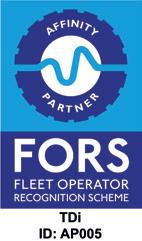
Classified spring 2024 STANDARD MAGAZINE | 55
Simple, Efficient, Modern Transport Software Solutions
TDi are proud to be the FORS
Tacho Service provider
+44 (0)1246 252375 tdisoftware.co.uk hello@tdi.tc
for more information
Scan
Words: David Whiffin & Odilia Clark
ESG – WHAT IT MEANS AND HOW IT CAN INCREASE PERFORMANCE
Drug and alcohol testing and peer support are pillars of excellence at work
ESG is a phrase that echoes throughout most areas of organisations these days. This article aims to explore how proactive drug and alcohol programmes, when coupled with peer support programmes and Environmental, Social, and Governance (ESG) principles, can improve organisational performance and enhance the welfare of their staff.
What exactly is ESG? Which components are relevant in the context of drugs and alcohol and peer support programmes?
ESG criteria is increasingly used in evaluating an organisation’s
sustainability and ethical impact. Moreover, this puts the ‘social’ component in the spotlight, focusing specifically on employee treatment. Herein lies an opportunity for organisations to position drug and alcohol testing and peer support programmes as essential components within their ESG strategy, demonstrating a commitment to both compliance and the overarching wellbeing of their workforce.
We are particularly interested in the ‘S’ in ESG, which centres on the social aspect of corporate conduct. For employers, this means prioritising employee wellbeing, fostering diversity and inclusion and actively engaging

with local communities. Employee health and safety, fair labour practices and the ethical treatment of suppliers all fall under the ‘social’ pillar. ESGconscious organisations understand that a socially responsible approach not only enhances their reputation but also fosters a positive workplace culture and strengthens relationships with stakeholders.
Drug and alcohol testing: a socially responsible measure
A programme of drug and alcohol testing should not be viewed as punitive by employees, but rather as a safety net supporting the organisation’s peer support programme. OdiliaClark’s TalkToaPeer programme addresses a broad range of issues, often revealing psychoactive substance use as a maladaptive coping strategy. In previous articles published in this magazine, we’ve covered everything from drug and alcohol policy and equipment, to the procedures following a positive finding. Suffice to say, integrating robust drug and alcohol testing programmes aligns directly with the ‘social’ aspect of ESG, underscoring an organisation’s commitment to fostering a safe, responsible and healthy working environment. Beyond meeting regulatory requirements, drug and alcohol testing manifests a steadfast dedication to employee safety, contributing positively to an organisation’s reputation and overall sustainability.
Legal 56 | STANDARD MAGAZINE spring 2024
Above: Drug and alcohol testing manifests a steadfast dedication to employee safety

Peer support programmes: nurturing social responsibility
Starting from the premise that no employee wants to come to work under the influence of a substance, we must examine the support mechanisms in place for employees, with the aim of reducing the risk that they resort to maladaptive coping strategies for issues they may be facing.
These initiatives contribute not only to employee wellbeing, but also to cultivating a sense of community and support within the workplace. Prioritising mental health and addressing substance-related challenges through peer support programmes exemplifies a commitment to social responsibility and the holistic welfare of employees.
The bond of testing and peer support in the ESG context
Integrating drug and alcohol testing with peer support initiatives creates a collaborative relationship. Testing serves as a preventive measure, where we identify potential issues before they escalate. Simultaneously, peer support programmes offer a responsive, compassionate network for individuals
facing challenges, embodying the ‘social’ pillar of ESG by nurturing a workplace culture that values the wellbeing of every team member.
ESG reporting: a testament to wellbeing commitment
ESG reporting has become standard for organisations seeking to transparently communicate their sustainability efforts. Including outcomes from drug and alcohol testing, along with the impact of peer support programmes, ESG reports demonstrate a commitment to accountability, transparency and the comprehensive wellbeing of the workforce.
A holistic ESG approach to employee wellbeing
In an era where organisations are scrutinised not only for financial performance but also for their societal and environmental impact, strategically integrating drug and alcohol testing with peer support programmes within ESG initiatives becomes paramount.
This alignment not only adheres to ethical practices but also contributes to a workplace culture by prioritising employee health, safety and resilience.
As we continue our journey towards sustainable and responsible business practices, the fusion of testing and peer support stands as a beacon, fostering holistic employee wellbeing within the ESG paradigm. ◼
A programme of drug and alcohol testing should not be viewed as punitive by employees. Integrating drug and alcohol testing with peer support initiatives creates a collaborative relationship
Legal spring 2024 STANDARD MAGAZINE | 57
Above: Firms should prioritise employee wellbeing, and fostering diversity and inclusion

Classified 58 | STANDARD MAGAZINE spring 2024


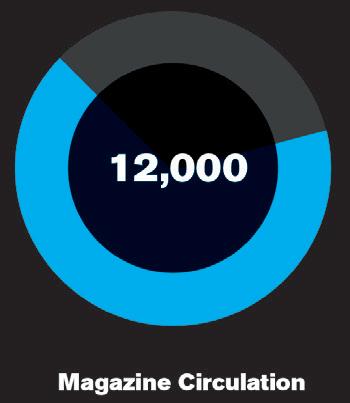








Classified spring 2024 STANDARD MAGAZINE | 59 MAGAZINE Advertising Sales: David Johns Telephone: 01388 517 906 Mobile: 07590 547 343 Email: sales@thestandardmagazine.co.uk ADVERTISE WITH US Standard Magazine is committed to bringing you the latest news, information and guidance regarding compliance, legislation and regulations for road transport Talk to the experts: +44 (0)151 348 5777 sales@astra-vt.com / astra-vt.com First call for specialist vehicle engineering (chassis modification & vehicle conversions) ID: A00432 AVT’s eet preparation team can provide innovative tailored solutions to suit your eet requirements with a wide range of products, support, and a dedicated 3D CAD department, all creating a one stop shop in an effort to reduce build times and save unnecessary and costly vehicle movements, getting your eet on the road as quickly and cost effectively as possible. Fleet Preparation and Accessories Innovative tailored solutions to suit your fleet requirements CUSTOM CATWALKS SPLIT CHARGE SYSTEMS CAMERA SAFETY SYSTEMS AVT CLEARVIEW HANDBRAKE & REVERSE ALARMS RAISED A FRAMES SIDE SKIRTS UNDER TANK PROTECTION SUZIE PARK PLATES TRAILER RUN UP RAMPS FIRE EXTINGUISHER KITS WHEEL CHOCK KITS Blind Spots in Heavy Goods and Construction vehicles Astra ClearView – low level passenger door windows help to improve direct vision by reducing the blind spot area, whilst maintaining full operation of the electric side window. Astra CLEARVIEW Innospec Manufacturing Park, Oil Sites Road, Ellesmere Port, Cheshire CH65 4EY Astra 185x135_02-2023.qxp_Layout 1 23/05/2023 9:33 am Page 1
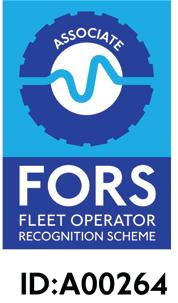







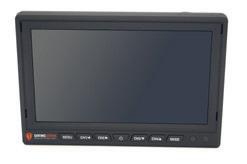














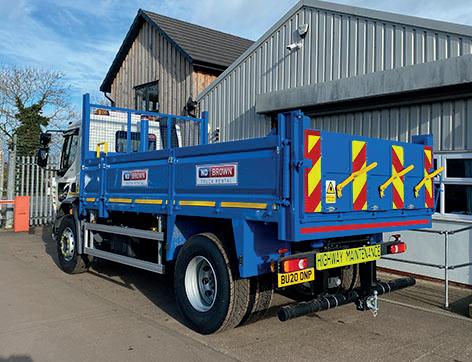







Classified 60 | STANDARD MAGAZINE spring 2024 Body FIXED & DROPSIDE TIPPER GRABS, PEU’s & CRANE VEHICLES SKIP / HOOK LOADER, SWEEPER & GULLY EMPTIER MUNICIPAL VEHICLES Email: enquiries@ndbrown.co uk, Phone: 01902 791991, Web: www ndbrown co uk Depots In: West Midlands (Head Office) - rlingshire - Devon - Kent - Belfast INSULATED DROPSIDE & CAGED TIPPER VEHICLES Supplying the ity, Municipal, Highway Maintenance and Environmental Service sectors with Specialist SelfDrive Commercial Vehicle Hire for over 4 decades www ndbrown.co.uk FORS SI L VER S T ANDARD A Carbon Assessed & Carbon Neutral Organisation Since 2020 VEHICLE SALES - Offering commercial vehicles from our ex-rental fleet or new SERVICE & REPAIR - Our in-house fully trained mobile service engineers cover all MOBILE, STATIC & TOWABLE HOTBOXES AND ECON ROADMENDERS VEHICLE HIRE - Supplying a fleet of over 1000 high specifica�on, self-drive commercial vehicles from five depots na�onally. STREET LIGHTING VEHICLES BUILDERS MERCHANT VEHICLES DROPSIDES WITH CRANES ID:A00264 Contact our sales team on: T: 01285 771333 E: sales@sentinelsystems.co.uk www.sentinelsystems.co.uk Are you ready for DVS’s Progressive Safe System requirements? With Sentinel System’s AI-powered camera system, you will be. Audible warning in cab Audible left turn alarm AI powered 1080p cameras Cable and ancillaries 4 channel split-screen AHD in-cab monitor
HOW HAYLEIGH’S STYLE HELPS CHANGE THE TRANSPORT INDUSTRY
Women’s skill sets can complement men’s thinking to improve trucking and fleet businesses
Women can make a major contribution to the road transport industry because of the skill sets they bring, says Hayleigh Russell, Transport Administrator at demolition, waste management and recycling specialist Collard Group. “We can multi-task, and we’re good team players,” she points out.
Unfortunately, women’s potential is still not fully appreciated in what remains a male-dominated environment, she adds.
“In some workplaces we’re invisible and only seen as entry-level workers,” said Russell. “Even when you hold a transport manager’s Certificate of Professional Competence, as I do, it’s difficult to make transport departments understand that you have the skills and experience to do the job.”
Russell has worked for a number of different haulage and distribution companies over the past 23 years. She was put through her manager’s CPC training by one of them because a transport manager spotted her potential.
She joined Collard Group, a FORS Gold Operator, three years ago and praises the firm for the support it gives her in what is a demanding role, and for its positive attitude to gender diversity. The organisation has also shown that it recognises the pressures that life can bring to bear on a single working mother with two small children, she reports.
Her job title is a little misleading because she is in effect the company’s compliance officer. “I’m an Advanced FORS Practitioner,” she adds.
Her involvement with FORS has undoubtedly helped with her professional development, she says.
“It’s helped to strengthen my previous training and made me look at various areas of the business with a different mindset,” she explains. “FORS gives us the tools that enable us to maintain
our high standards and make sure that everyone gets to go home safely at the end of their shift.”
At some of the places she has worked, she has been shouted at, sworn at and even physically assaulted by men who do not like being given instructions by a woman. Attitudes are thankfully changing, she believes, but there remains some way to go.
“There is still a fundamental lack of women in leadership roles in transport,” Russell observes. This is despite the fact that championing gender diversity at the highest levels in companies can result in them becoming more productive, and more profitable, she adds.
“Women can see things from a different perspective than men and I believe the two can complement each other.”
What advice would she give to a woman contemplating a career in transport? “Come prepared with a thick skin and remember that if you’re a wallflower, you’re never going to last,” she laughs.
“Take every opportunity that you’re offered and be prepared to work hard and fight for change, because it won’t happen overnight. But if you can implement the necessary changes, then it can be
a fulfilling and rewarding career where every day holds a different challenge.”
The International Women’s Day message of ‘Invest in Women’ is undoubtedly relevant as far as she is concerned.
“I hope I can help inspire women to come into and progress in this industry and see that it’s becoming a more accessible career for everyone,” she concludes. “I’m demonstrating that it’s possible.”

Above: Hayleigh Russell – women can see things from a different perspective than men
Below: Collards has supported Hayleigh in her demanding role

Women in transport spring 2024 STANDARD MAGAZINE | 61
Words: Steve Banner
With our innovative technology, you can identify and assess risky and distracted driving behaviours that might not be detected by traditional telematics.
4
For 2021, Vision UK is offering safety equipment meeting the requirements of DVS, FORS and CLOCS schemes, to provide a higher level of driver assistance than is required by the guidlines

For 2023, Vision UK is offering safety equipment meeting the requirements of DVS, FORS and CLOCS schemes, to provide a higher level of assistance than is required by the guidelines
For 2020, Vision UK is offering safety equipment meeting the requirements of DVS, FORS and CLOCS schemes, to provide a higher level of driver assistance than is required by the guidelines
For 2019 Vision UK are introducing our CLOCS+ System that embraces the spirit of the FORS and CLOCS schemes to provide an even higher level of driver assistance than is required by the guidelines


l Blind Sport Vision System for Construction Logistic Operators
l Vision and Recording System for Construction Logistic Operators
l High Resolution WDR Cameras
l Compliance systems (LDVS-70 SD or HD)


l CLOCS-70 system (system updated for 2020 with HD cameras


Classified 62 | STANDARD MAGAZINE spring 2024 We know transport law wards 01254 828 300 backhousejones.co.uk Boutique Firm of the Year The Lawyer Awards 2019 26 CVDriver March 2021 Frodsham Business Centre, Frodsham, Cheshire WA6 7FZ www.vision-uk.co.uk 2019 Vision 2019 Driver “Blind Spot” Vision and 360 degree Recording Systems Vision System for
Vision UK Frodsham Business Centre, Frodsham, Cheshire WA6 7FZ are introducing our CLOCS+ embraces the spirit of the FORS and provide an even higher level of is required by the guidelines. Front Blind Spot Camera and Detection System to the standsystems, simultaneously providing vision and proximity detection along the side of the vehicle.
Blind Spot Vision System for
Logistic
● Vision and Recording System
Logistic
● High Resolution
www.vision-uk.co.uk VISION-UK, 43 Westminster Chambers, Hunter Street, Chester CH1 2HR Tel: 0800 731 3316 Fax: 0800 731 3317 E-mail: info@vision-uk.co.uk Vision UK, the UK’s No1 supplier of vehicle vision systems, now offer three system packages specifically designed to meet the requirements of the different FORS levels and CLOCS scheme. ReadyforFORS? Untitled-3 1 20/02/2018 14:11 vision-uk-thissun.indd 1 19/09/2018 13:19
Construction Logistic Operators
●
Construction
Operators
for Construction
Operators
WDR Cameras
Proactively
detect risky and distracted driving behaviours
Connect with
Visit lytx.com/lytx-surfsight-solutions
©2021 Lytx Inc. All rights reserved. 0221-SUR-300-176
us today!
for more information.










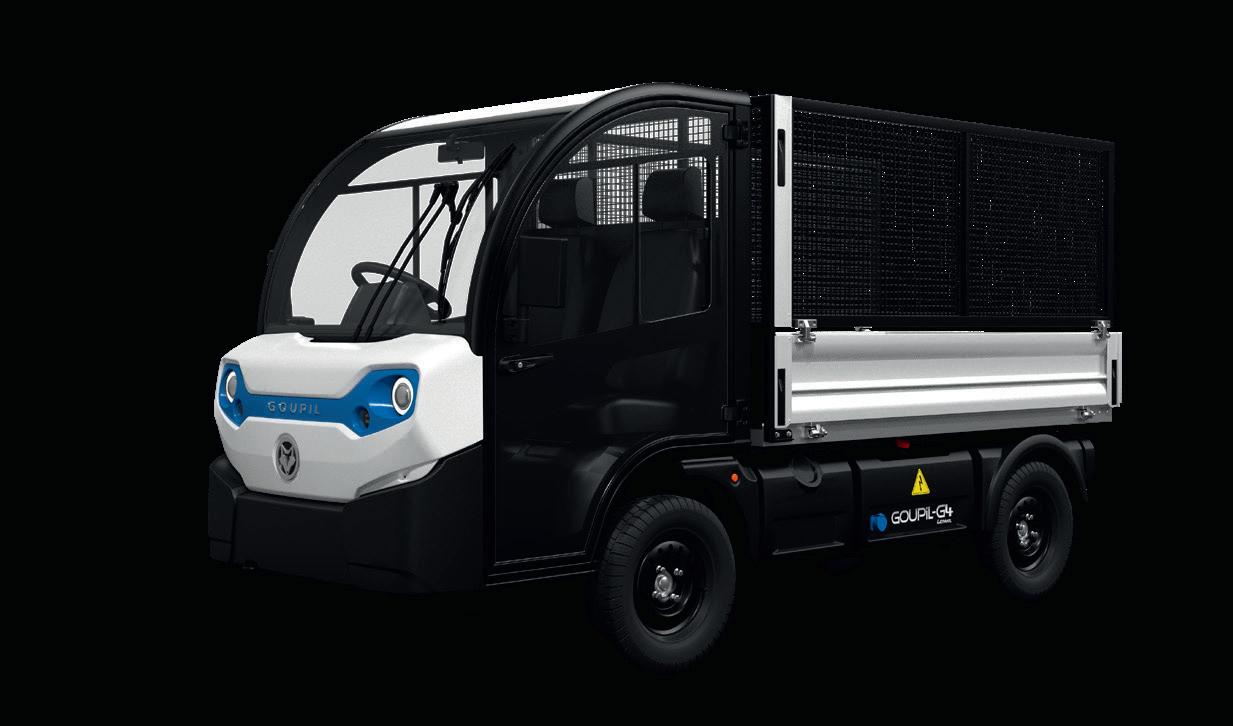


Classified spring 2024 STANDARD MAGAZINE | 63 ADAPTIVE AND VERSATILE ELECTRIC UTILITY VEHICLES 0ZERO-EMISSIONS 100% ELECTRIC CONTACT: 01780 782 621 WWW.BRADSHAWEV.COM SALES@BRADSHAWEV.COM Farrow Browne Gr yspeerdt Ltd APPROVED CENTRE info@fbgtraining.com www.fbgtraining.com 01634 393236 FBG TRAINING COURSES • FORS PROFESSIONAL • DRIVERS HOURS • DRIVER VEHICLE CHECKS • FIRST AID SCAN THIS QR CODE FOR A FORS DISCOUNT CODE VEHICLE TRAINING Visit our website for more courses LoCITY DRIVING • FORS PROFESSIONAL • ALTERNATIVE FUELLED SAFE DRIVING






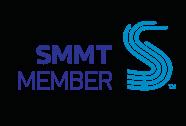


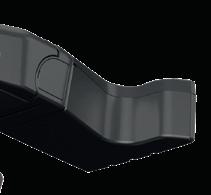







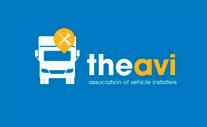
Tel: +44 (0) 1255 555200 | Email: sales@durite.co.uk | Website: www.durite.co.uk CONTACT THE SAFETY EXPERTS DVS@DURITE.CO.UK OR 01255 555 209 Introducing our fully compliant All-in-One Progressive Safe System. Durite has got you covered. Durite, Leaders in Vehicle Safety. From DVR and 4G DVR kits, FORS compliant kits and DVS Progressive Safe Systems, all our kits are E-marked and come with extended warranty as standard. We offer free demos and bespoke solutions, and for your peace of mind, installation services are available UK-wide. durite.co.uk


























































































































































































































































